Shows
 Beyond The ZeroEnd of year Special - Part 2Ben Slotky
Avner Landes, Sara Lippmann, Adam Levin
Daniel Davis Wood, Bristol Vaudrin
Dustin Illingworth
Show notes
Part 2
Ben Slotky
Best of 2024
Mariana Enriquez Short stories and Our Share of Night
Jessica Anthony - The Most
James Ellroy
Paul Auster
Adam Levin, Avner Landes, Sara Lippmann
Get...2024-12-212h 29
Beyond The ZeroEnd of year Special - Part 2Ben Slotky
Avner Landes, Sara Lippmann, Adam Levin
Daniel Davis Wood, Bristol Vaudrin
Dustin Illingworth
Show notes
Part 2
Ben Slotky
Best of 2024
Mariana Enriquez Short stories and Our Share of Night
Jessica Anthony - The Most
James Ellroy
Paul Auster
Adam Levin, Avner Landes, Sara Lippmann
Get...2024-12-212h 29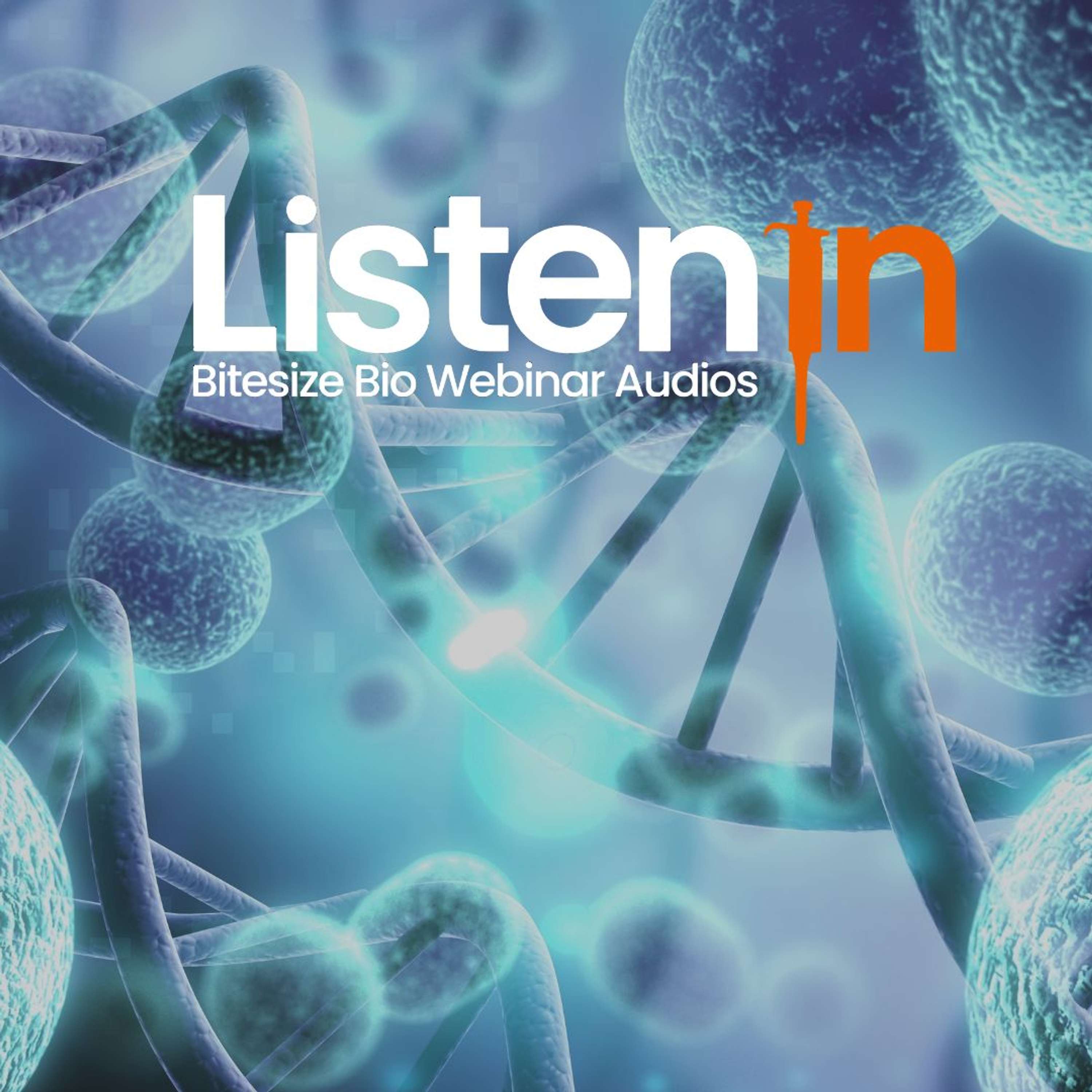 Listen In - Bitesize Bio Webinar AudiosMultiplexing Magic: How MULTI-seq Revolutionizes Single-Cell RNA SequencingLearn more about the capabilities of MULTI-seq in single-cell sequencing in this episode of Listen In. Developed by the Gartner Lab at UCSF, this innovative multiplexing method increases sample and cell throughput while minimizing cost and improving your data quality. From modest experiments to expansive 96-plex studies and beyond, MULTI-seq enables truly mechanistic studies. Hit play to explore the potential of this tool and how it could benefit your research.Watch the full presentation here: https://events.bitesizebio.com/multiplexing-magic-how-multi-seq/joinBrowse all episodes of the Listen In Series here: https://listen-in.bitesizebio...2024-12-1348 min
Listen In - Bitesize Bio Webinar AudiosMultiplexing Magic: How MULTI-seq Revolutionizes Single-Cell RNA SequencingLearn more about the capabilities of MULTI-seq in single-cell sequencing in this episode of Listen In. Developed by the Gartner Lab at UCSF, this innovative multiplexing method increases sample and cell throughput while minimizing cost and improving your data quality. From modest experiments to expansive 96-plex studies and beyond, MULTI-seq enables truly mechanistic studies. Hit play to explore the potential of this tool and how it could benefit your research.Watch the full presentation here: https://events.bitesizebio.com/multiplexing-magic-how-multi-seq/joinBrowse all episodes of the Listen In Series here: https://listen-in.bitesizebio...2024-12-1348 min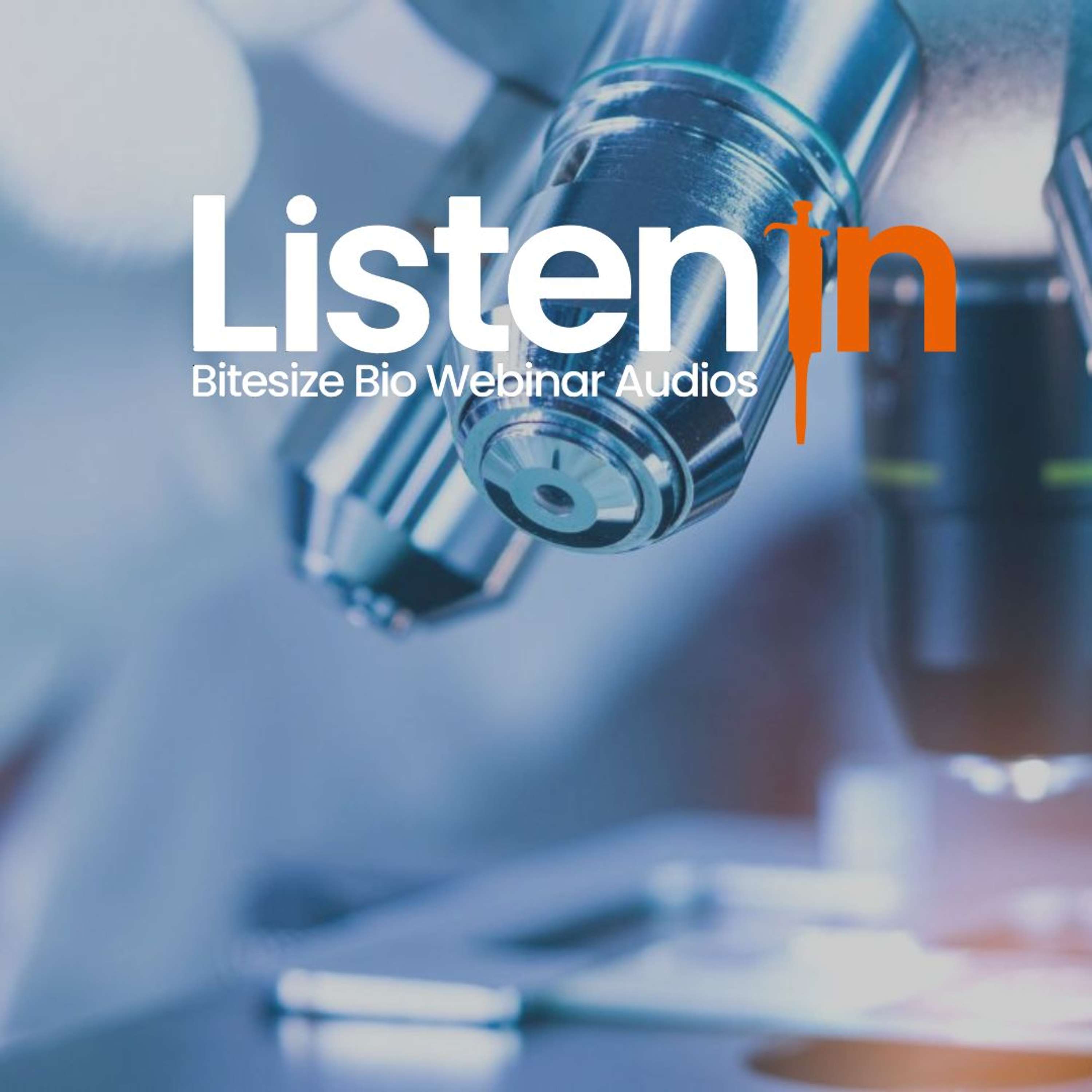 Listen In - Bitesize Bio Webinar AudiosAccelerate Scientific Progress: The Power of Reproducibility, Collaboration and New Imaging TechnologiesImaging scientists have a critical educational role in improving rigor and reproducibility by sharing their technical expertise and providing intellectual contributions in all aspects of image-based science. They participate in creating, developing, and disseminating guidelines, resources, and tools to improve image-based research.In this episode, learn what impacts reproducibility in microscopy, discover resources and initiatives for improving education, rigor, and reproducibility, and see how collaboration drives innovation.Watch the full presentation here: https://microscopyfocus.com/accelerate-scientific-progress-the-power-of-reproducibility-collaboration-and-new-imaging-technologies/Browse all episodes of the Listen In Series here: https://listen-in.bitesizebio.com/2024-11-111h 12
Listen In - Bitesize Bio Webinar AudiosAccelerate Scientific Progress: The Power of Reproducibility, Collaboration and New Imaging TechnologiesImaging scientists have a critical educational role in improving rigor and reproducibility by sharing their technical expertise and providing intellectual contributions in all aspects of image-based science. They participate in creating, developing, and disseminating guidelines, resources, and tools to improve image-based research.In this episode, learn what impacts reproducibility in microscopy, discover resources and initiatives for improving education, rigor, and reproducibility, and see how collaboration drives innovation.Watch the full presentation here: https://microscopyfocus.com/accelerate-scientific-progress-the-power-of-reproducibility-collaboration-and-new-imaging-technologies/Browse all episodes of the Listen In Series here: https://listen-in.bitesizebio.com/2024-11-111h 12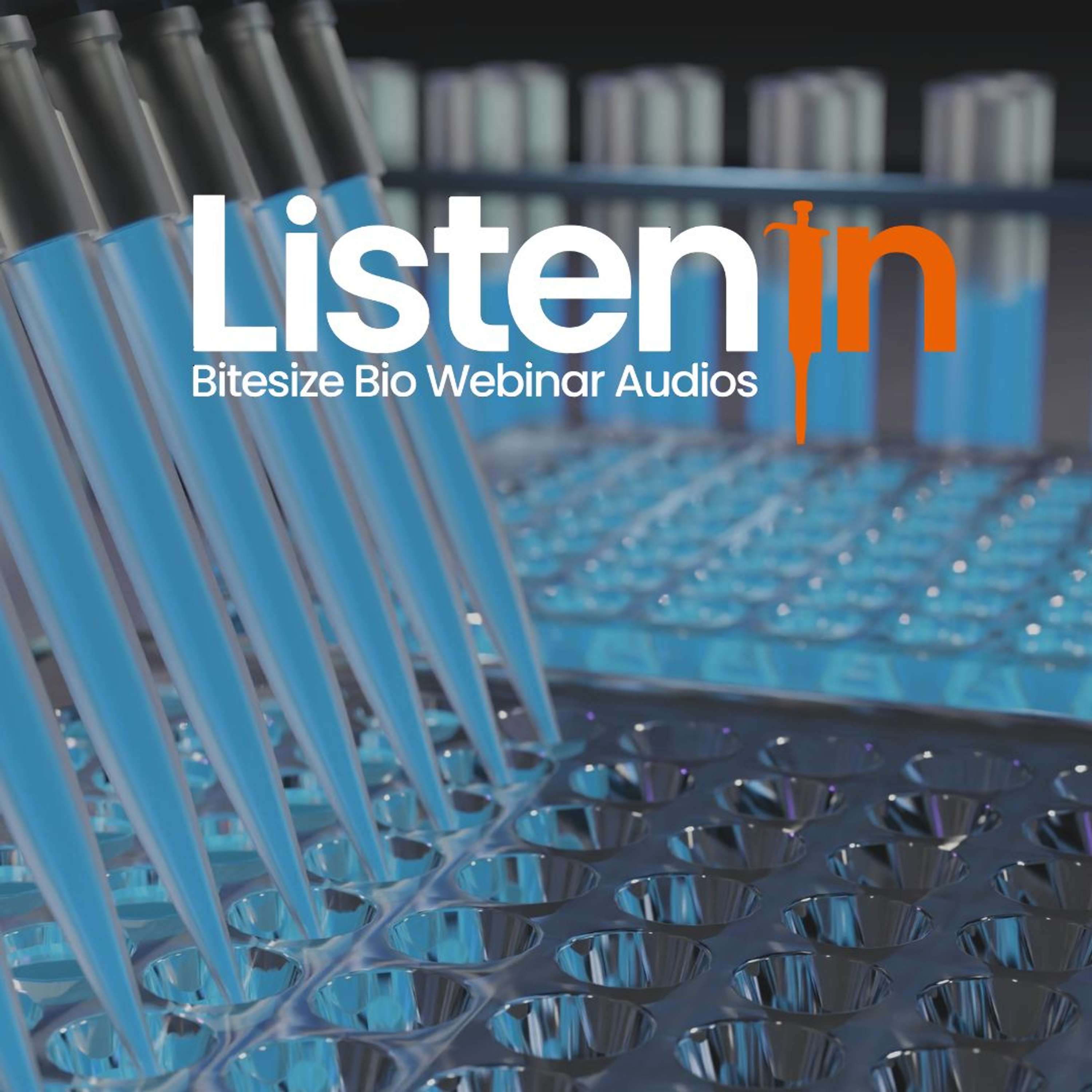 Listen In - Bitesize Bio Webinar AudiosInside Immunoassays: Best Practices for Accurate and Reliable ResultsImmunoassays play an indispensable role in scientific research. They facilitate the detection and quantification of specific analytes, enabling in-depth investigations into disease mechanisms, biomarker discovery, and evaluation of the potential of therapeutic interventions.Sample selection and preparation are of utmost importance, as they have a direct impact on the accuracy, reliability, and integrity of the obtained results.Properly selecting and preparing samples ensures that they are representative of the population under study and that the analytes of interest are preserved in their native state.In addition, controlling and mitigating matrix interference is crucial...2024-11-0456 min
Listen In - Bitesize Bio Webinar AudiosInside Immunoassays: Best Practices for Accurate and Reliable ResultsImmunoassays play an indispensable role in scientific research. They facilitate the detection and quantification of specific analytes, enabling in-depth investigations into disease mechanisms, biomarker discovery, and evaluation of the potential of therapeutic interventions.Sample selection and preparation are of utmost importance, as they have a direct impact on the accuracy, reliability, and integrity of the obtained results.Properly selecting and preparing samples ensures that they are representative of the population under study and that the analytes of interest are preserved in their native state.In addition, controlling and mitigating matrix interference is crucial...2024-11-0456 min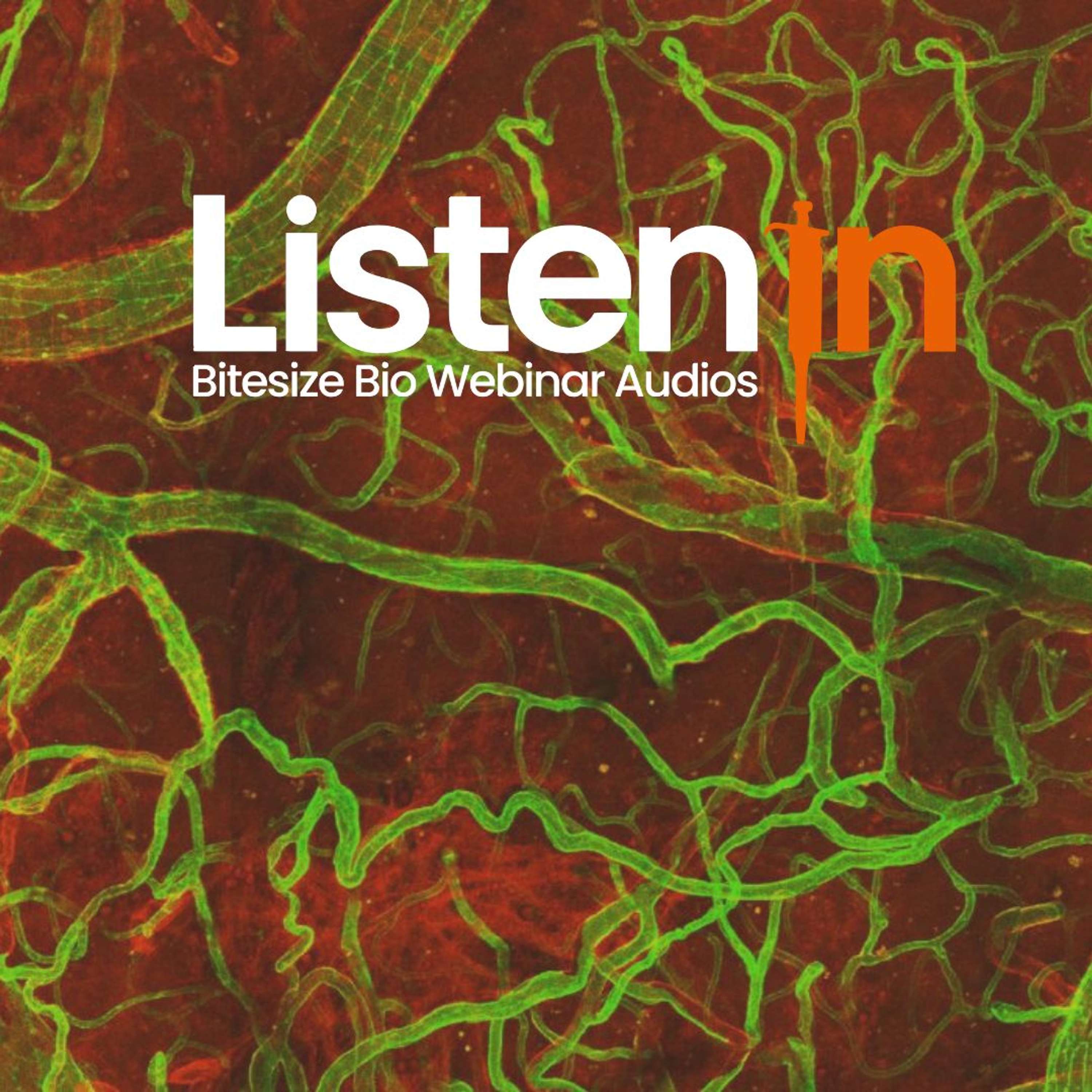 Listen In - Bitesize Bio Webinar AudiosWindows On Neurovascular PathologiesThe brain is an immune-privileged organ, meaning it is protected from the entry of pathogens, blood circulating factors, and immune cells by a physical barrier called the blood-brain barrier (BBB). But pathological events such as ischemia (stroke), trauma (traumatic brain injury), or tumor growth (gliomas and brain metastasis), activate the vascular endothelium, disturb or disrupt the BBB and allow immune cell homing.In this episode, discover how innate immunity can sustain deleterious effects following brain trauma, and the technological developments enabling longitudinal studies into post-trauma lesion remodeling.Watch the full presentation here: https...2024-10-281h 03
Listen In - Bitesize Bio Webinar AudiosWindows On Neurovascular PathologiesThe brain is an immune-privileged organ, meaning it is protected from the entry of pathogens, blood circulating factors, and immune cells by a physical barrier called the blood-brain barrier (BBB). But pathological events such as ischemia (stroke), trauma (traumatic brain injury), or tumor growth (gliomas and brain metastasis), activate the vascular endothelium, disturb or disrupt the BBB and allow immune cell homing.In this episode, discover how innate immunity can sustain deleterious effects following brain trauma, and the technological developments enabling longitudinal studies into post-trauma lesion remodeling.Watch the full presentation here: https...2024-10-281h 03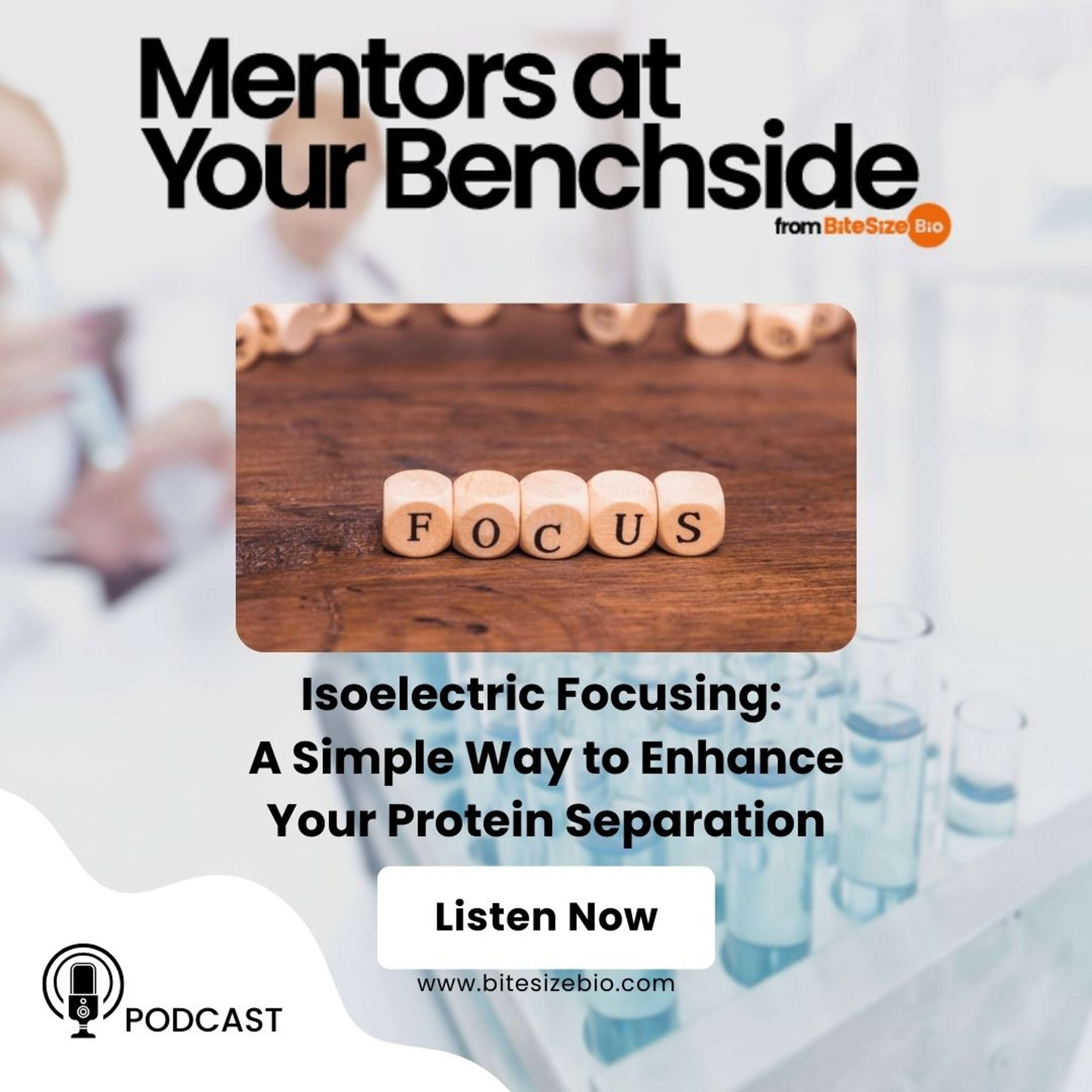 Mentors at Your BenchsideIsoelectric Focusing: A Simple Way to Enhance Your Protein Separation#112 — Isoelectric focusing (IEF) is a powerful technique distinct from the more familiar SDS-PAGE, [1,2] tailored for separating proteins or peptides based on their isoelectric points (pI). [3]This method capitalizes on the migration of charged molecules through a stable pH gradient until they reach a zone where their net charge is zero, halting their movement.Essential to setting up an IEF experiment are the IPG strips, equipped with a pH-responsive gel, and the sample, often mixed with carrier ampholytes for efficient migration.IEF's utility spans various applications, from enhancing 2D-PAGE protein separations to analyzing post-translational mo...2024-08-2009 min
Mentors at Your BenchsideIsoelectric Focusing: A Simple Way to Enhance Your Protein Separation#112 — Isoelectric focusing (IEF) is a powerful technique distinct from the more familiar SDS-PAGE, [1,2] tailored for separating proteins or peptides based on their isoelectric points (pI). [3]This method capitalizes on the migration of charged molecules through a stable pH gradient until they reach a zone where their net charge is zero, halting their movement.Essential to setting up an IEF experiment are the IPG strips, equipped with a pH-responsive gel, and the sample, often mixed with carrier ampholytes for efficient migration.IEF's utility spans various applications, from enhancing 2D-PAGE protein separations to analyzing post-translational mo...2024-08-2009 min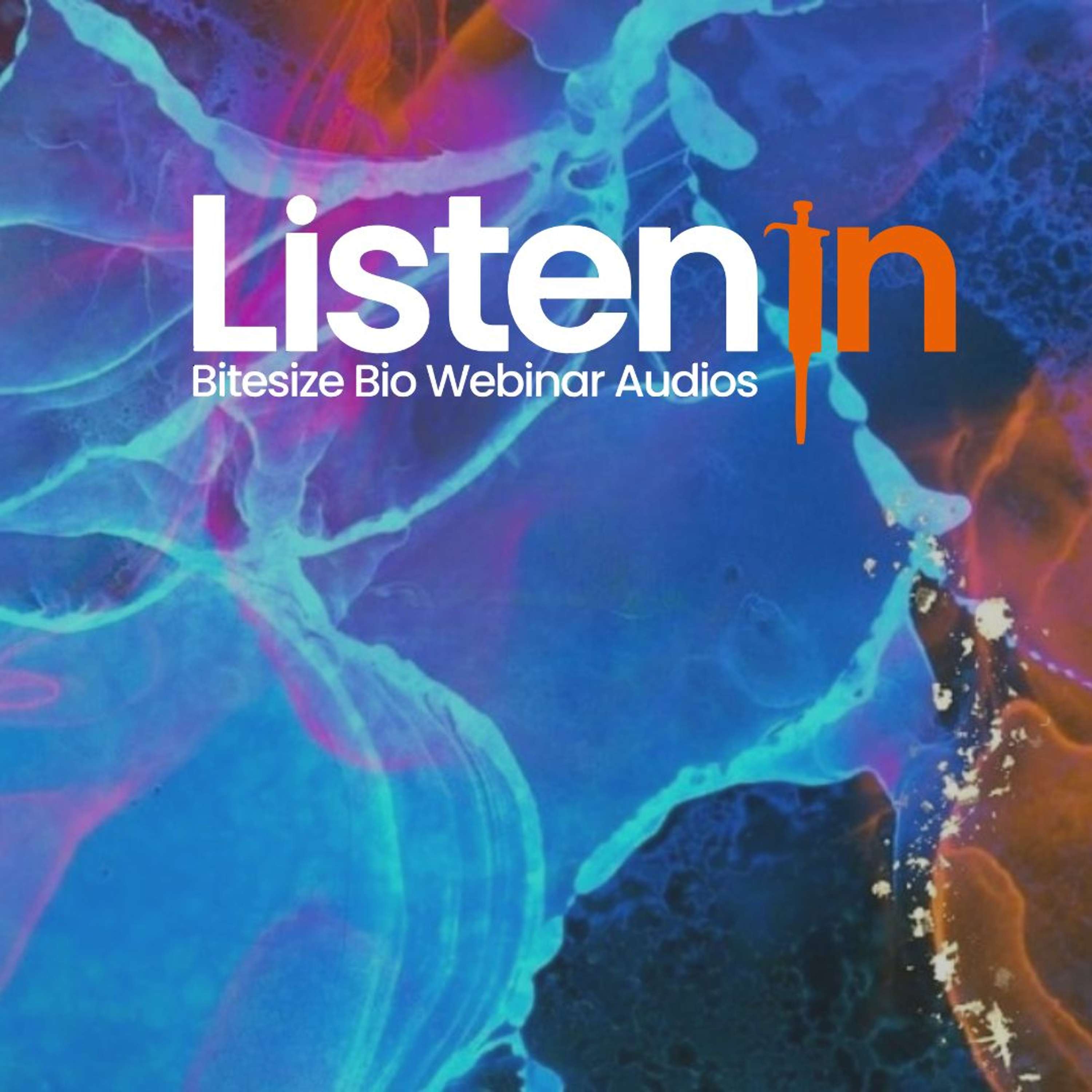 Listen In - Bitesize Bio Webinar AudiosVisualizing Protein-Protein Interactions by Non-fitting and Easy FRET-FLIM ApproachesUnderstanding molecular interactions in living cells is one of the key elements to deciphering the molecular mechanisms underpinning most cellular functions. Förster resonance energy transfer (FRET) is the gold standard for studying protein-protein interactions.Fluorescence lifetime imaging microscopy (FLIM) allows for a straightforward quantification of FRET based on the behavior of donor-only fluorescence.Join Dr. Padilla-Parra in this episode of Listen In to learn about some of the limitations of classical FRET approaches, how much information you can harness from FRET, and how lifetime-based non-fitting approaches such as minimal fraction of interacting d...2024-08-191h 10
Listen In - Bitesize Bio Webinar AudiosVisualizing Protein-Protein Interactions by Non-fitting and Easy FRET-FLIM ApproachesUnderstanding molecular interactions in living cells is one of the key elements to deciphering the molecular mechanisms underpinning most cellular functions. Förster resonance energy transfer (FRET) is the gold standard for studying protein-protein interactions.Fluorescence lifetime imaging microscopy (FLIM) allows for a straightforward quantification of FRET based on the behavior of donor-only fluorescence.Join Dr. Padilla-Parra in this episode of Listen In to learn about some of the limitations of classical FRET approaches, how much information you can harness from FRET, and how lifetime-based non-fitting approaches such as minimal fraction of interacting d...2024-08-191h 10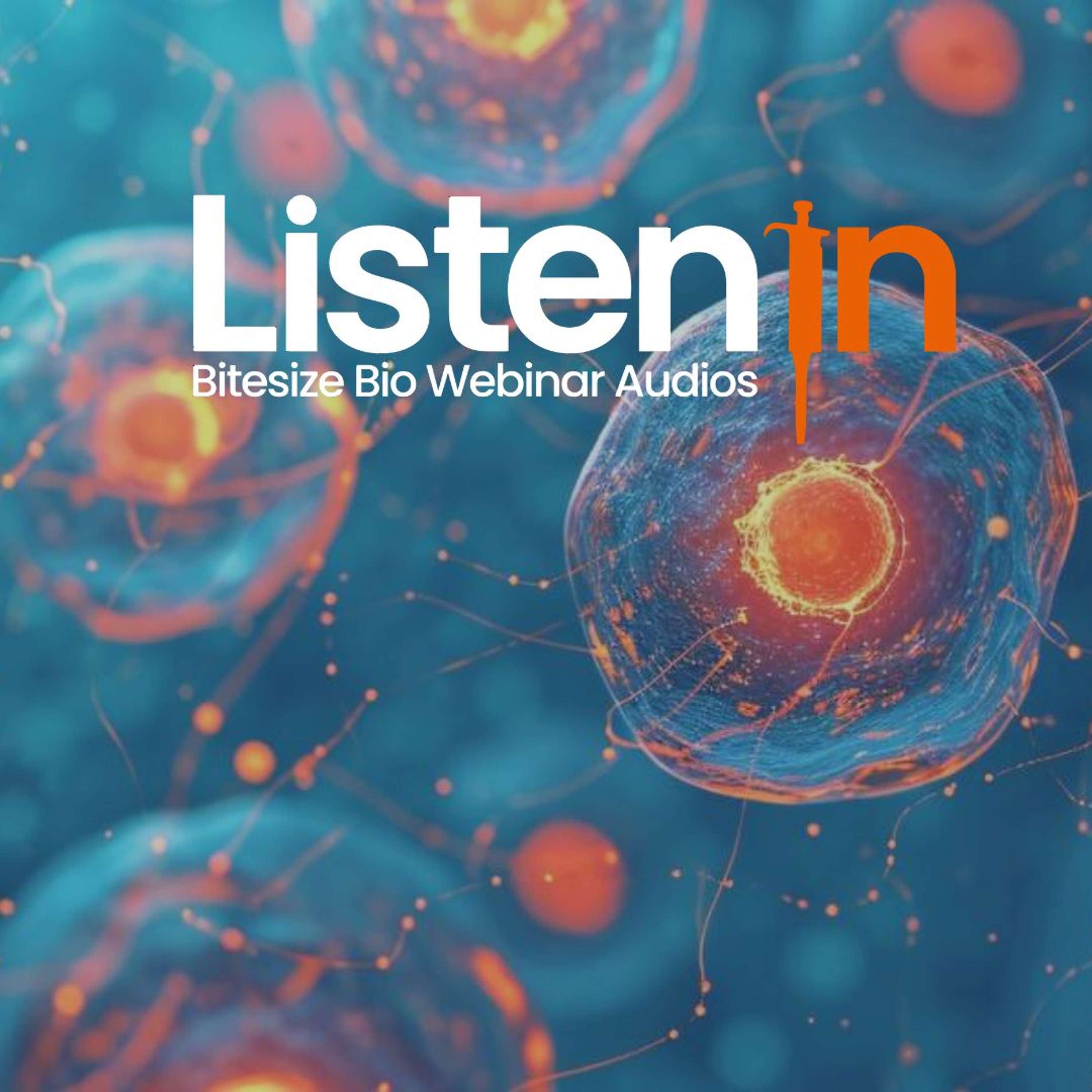 Listen In - Bitesize Bio Webinar AudiosOptimizing Nuclei Extraction & Counting for Single Cell SequencingSingle cell sequencing samples must be prepared to the highest possible standard.Discover reliable techniques to prepare and validate nuclei samples for single cell sequencing. In this episode, learn how to perform essential quality control checks, including a quick and reliable method for quantifying nuclei, measuring extraction efficiency, and visualizing debris in a sample. You will also get tips to optimize your existing nuclei extraction protocols from an experienced Application Scientist.Watch the full presentation here: https://events.bitesizebio.com/optimizing-nuclei-extraction/joinBrowse all episodes of the Listen In...2024-08-1246 min
Listen In - Bitesize Bio Webinar AudiosOptimizing Nuclei Extraction & Counting for Single Cell SequencingSingle cell sequencing samples must be prepared to the highest possible standard.Discover reliable techniques to prepare and validate nuclei samples for single cell sequencing. In this episode, learn how to perform essential quality control checks, including a quick and reliable method for quantifying nuclei, measuring extraction efficiency, and visualizing debris in a sample. You will also get tips to optimize your existing nuclei extraction protocols from an experienced Application Scientist.Watch the full presentation here: https://events.bitesizebio.com/optimizing-nuclei-extraction/joinBrowse all episodes of the Listen In...2024-08-1246 min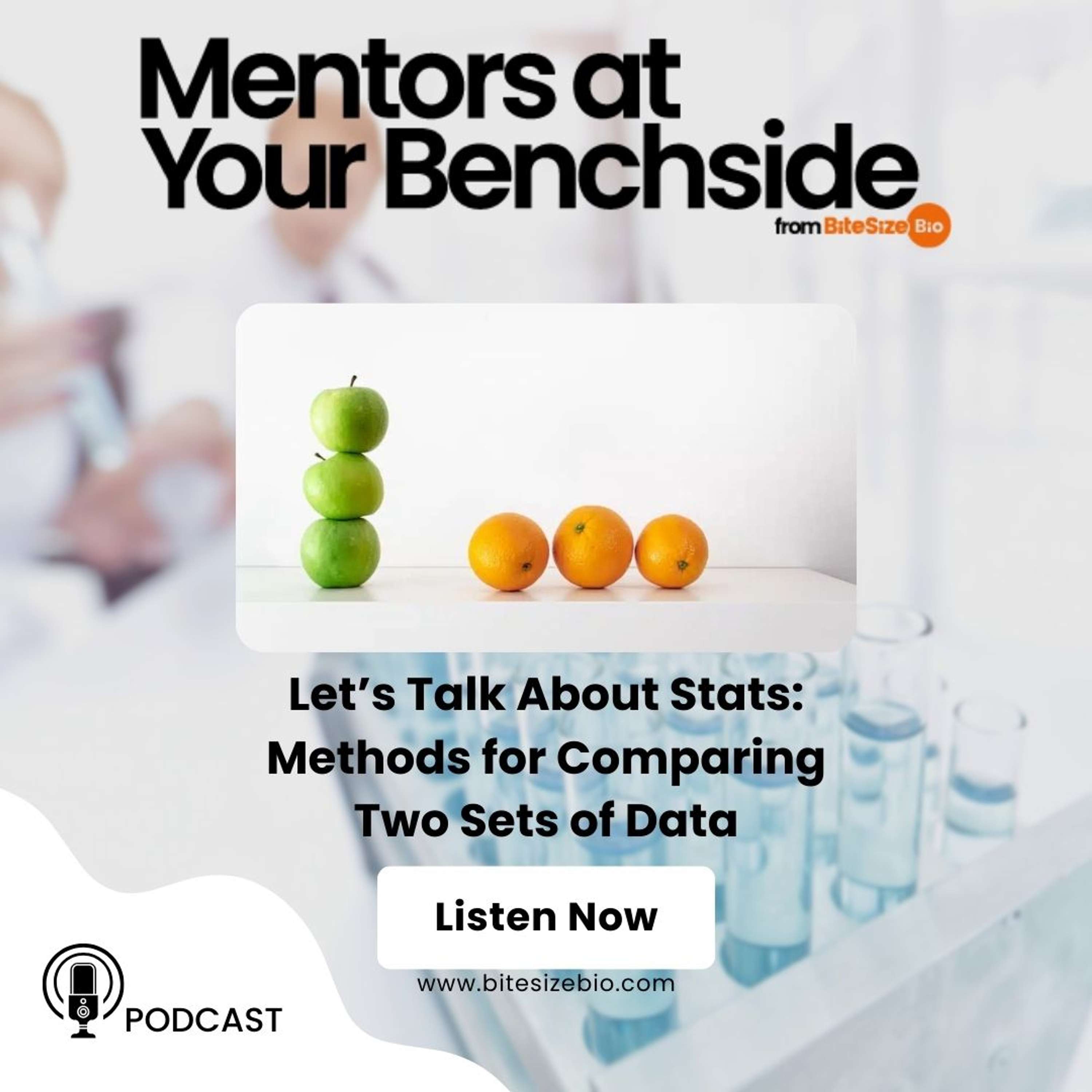 Mentors at Your BenchsideLet’s Talk About Stats: Methods for Comparing Two Sets of Data#110 — Comparing two sets of data is a fundamental process in statistical analysis, crucial for drawing meaningful conclusions across various fields. Whether it's for determining the success of an intervention, understanding market trends, or validating scientific research, the need for comparison arises.This episode delves into the essence of data comparison, focusing on two prevalent statistical tests: the Student’s t-test and the Mann–Whitney U test. [1] Each test comes with its assumptions and applicability, making the choice between them critical depending on the nature of your data.Read our related article to learn more about compar...2024-07-2304 min
Mentors at Your BenchsideLet’s Talk About Stats: Methods for Comparing Two Sets of Data#110 — Comparing two sets of data is a fundamental process in statistical analysis, crucial for drawing meaningful conclusions across various fields. Whether it's for determining the success of an intervention, understanding market trends, or validating scientific research, the need for comparison arises.This episode delves into the essence of data comparison, focusing on two prevalent statistical tests: the Student’s t-test and the Mann–Whitney U test. [1] Each test comes with its assumptions and applicability, making the choice between them critical depending on the nature of your data.Read our related article to learn more about compar...2024-07-2304 min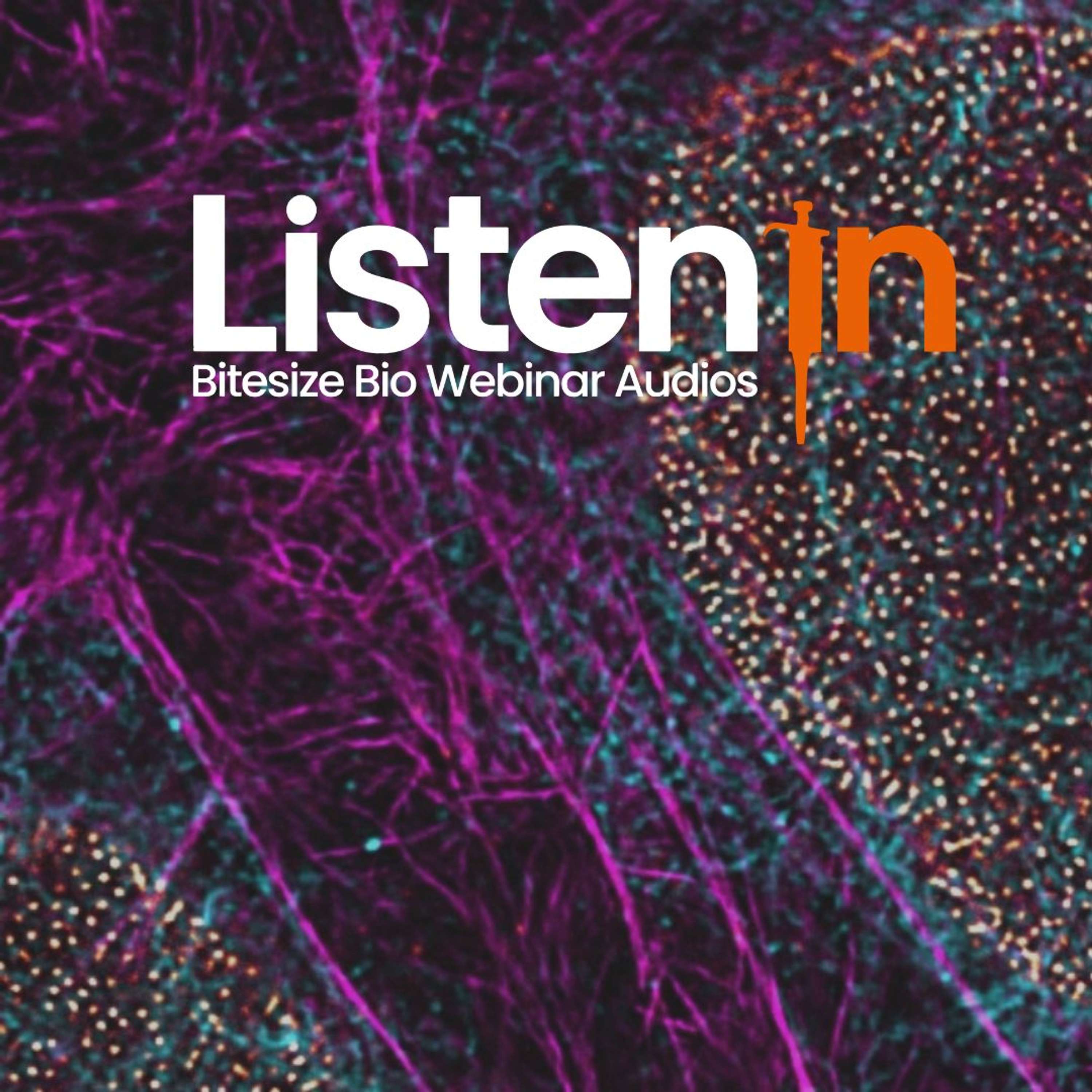 Listen In - Bitesize Bio Webinar AudiosNew TauSTED Tools for Gentle Live Imaging at Nanoscale ResolutionThis episode of Listen In showcases the latest tools and developments for multiplex STED imaging of living specimens at nanoscale resolution. Confocal imaging is a fundamental tool for studying the complex interplay of biomolecules, molecular machines, and higher-order cellular structures owing to its optical sectioning, sensitivity, and temporal and spatial resolution capabilities.Imaging complex cellular structures at nanoscale resolution while characterizing the dynamics of multiple species in live specimens are emerging avenues to shed light on biological processes in their native physiological context.With the advent of STED, researchers have realized the visualization...2024-07-151h 04
Listen In - Bitesize Bio Webinar AudiosNew TauSTED Tools for Gentle Live Imaging at Nanoscale ResolutionThis episode of Listen In showcases the latest tools and developments for multiplex STED imaging of living specimens at nanoscale resolution. Confocal imaging is a fundamental tool for studying the complex interplay of biomolecules, molecular machines, and higher-order cellular structures owing to its optical sectioning, sensitivity, and temporal and spatial resolution capabilities.Imaging complex cellular structures at nanoscale resolution while characterizing the dynamics of multiple species in live specimens are emerging avenues to shed light on biological processes in their native physiological context.With the advent of STED, researchers have realized the visualization...2024-07-151h 04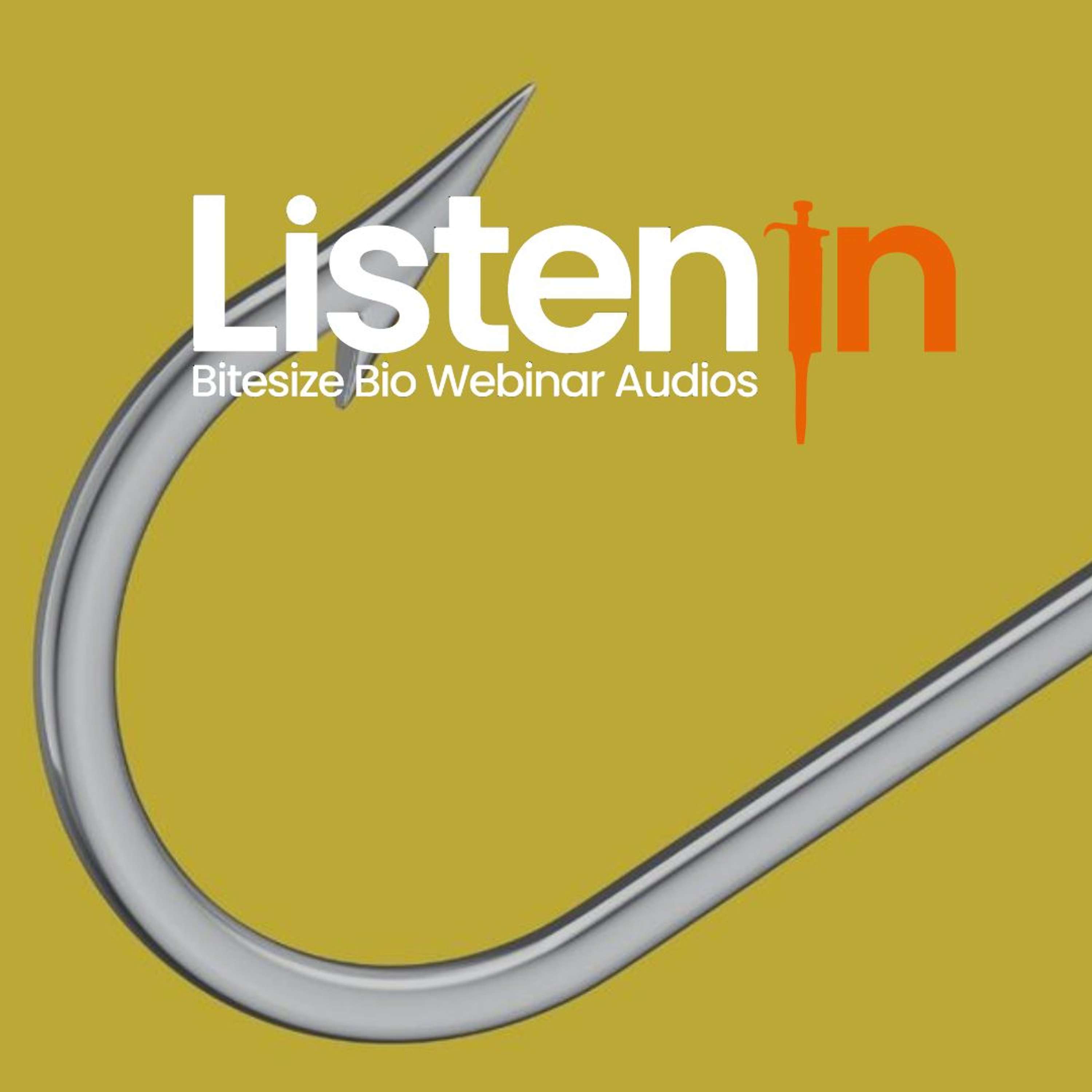 Listen In - Bitesize Bio Webinar AudiosFinding The Ideal Hook for Your Science StoryYour research is important, but it can be hard to explain to others why it's important. In this episode of Listen In, you'll learn to find the ideal hook for your science story. This trick, borrowed from journalism, involves taking a step back and thinking about all the aspects of your research and where they might overlap with other topics that attract interest from other people. Knowing how your research connects with other areas is useful when writing grant proposals or giving public talks about your work because it helps you write or...2024-07-0837 min
Listen In - Bitesize Bio Webinar AudiosFinding The Ideal Hook for Your Science StoryYour research is important, but it can be hard to explain to others why it's important. In this episode of Listen In, you'll learn to find the ideal hook for your science story. This trick, borrowed from journalism, involves taking a step back and thinking about all the aspects of your research and where they might overlap with other topics that attract interest from other people. Knowing how your research connects with other areas is useful when writing grant proposals or giving public talks about your work because it helps you write or...2024-07-0837 min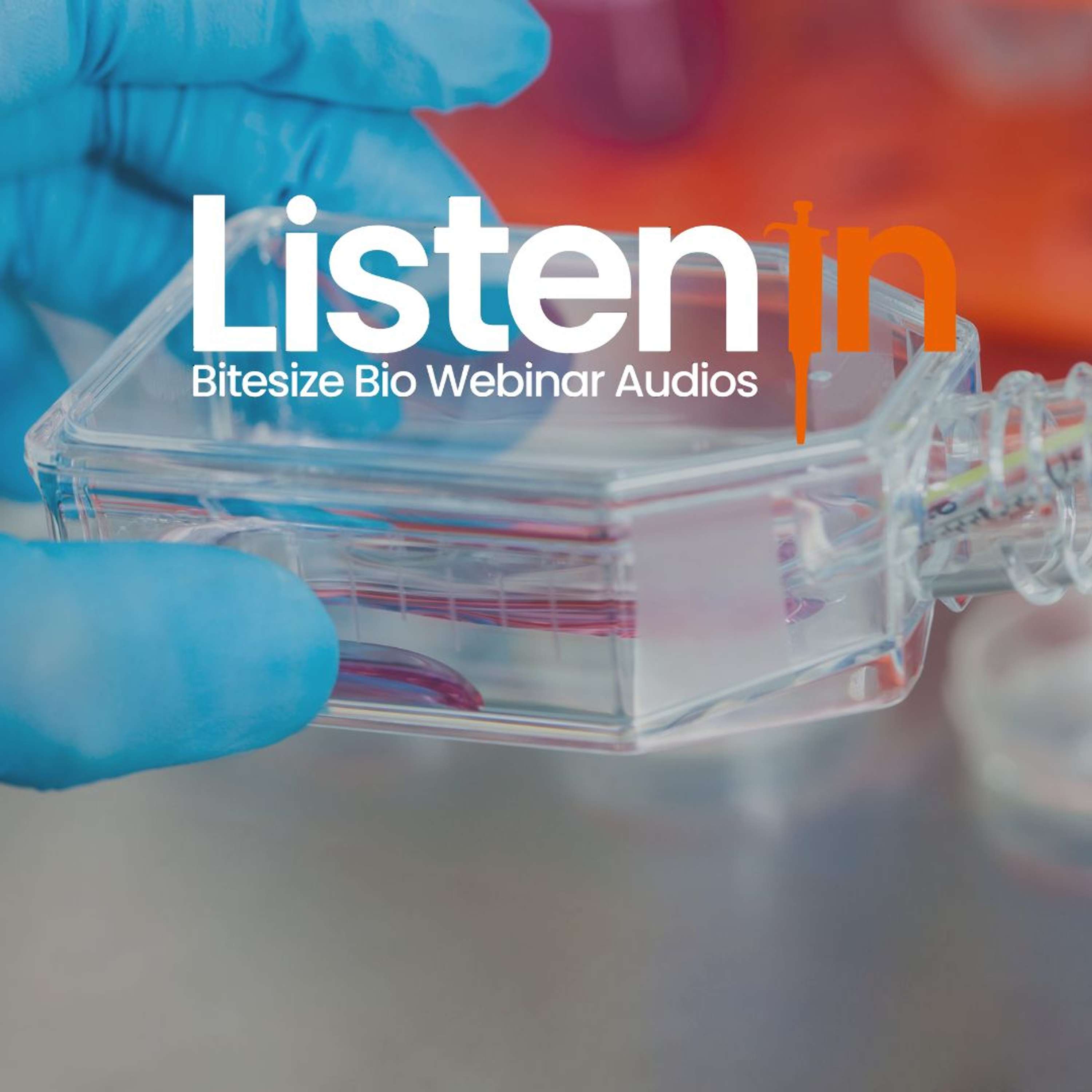 Listen In - Bitesize Bio Webinar AudiosCulture Media Preparation: Contamination Control and Retention of Critical ComponentsContamination poses a significant risk in cell culture, jeopardizing research outcomes and incurring costly setbacks.This episode of Listen In gives you valuable insights into often overlooked areas of your filtration processes and will help you safeguard your sensitive cell cultures. Explore the critical importance of sterile filtration in diverse applications leveraging Millipore® filtration technology.Hear about the alarming consequences of suboptimal filters in sensitive media composition, highlighting the financial and time investments at stake. Plus, discover how the use of Millipore® filters as the gold standard in both non-sterile and st...2024-07-0152 min
Listen In - Bitesize Bio Webinar AudiosCulture Media Preparation: Contamination Control and Retention of Critical ComponentsContamination poses a significant risk in cell culture, jeopardizing research outcomes and incurring costly setbacks.This episode of Listen In gives you valuable insights into often overlooked areas of your filtration processes and will help you safeguard your sensitive cell cultures. Explore the critical importance of sterile filtration in diverse applications leveraging Millipore® filtration technology.Hear about the alarming consequences of suboptimal filters in sensitive media composition, highlighting the financial and time investments at stake. Plus, discover how the use of Millipore® filters as the gold standard in both non-sterile and st...2024-07-0152 min Listen In - Bitesize Bio Webinar AudiosAutomate Your Pipetting — Unleash Your PotentialDespite the growing number of new technologies and automated instruments, routine liquid handling is still a manual process in many labs. The trend towards automation is gaining importance, not only with complex applications, such as NGS library preparation but also with simple yet repetitive liquid handling steps where automated pipetting makes sense. A variety of automated liquid handling systems—suiting all budgets and workloads—are now available. These systems are designed to improve consistency and efficiency by eliminating both person-to-person and day-to-day variability. But how to get started with automation? When does it make sense to a...2024-06-2440 min
Listen In - Bitesize Bio Webinar AudiosAutomate Your Pipetting — Unleash Your PotentialDespite the growing number of new technologies and automated instruments, routine liquid handling is still a manual process in many labs. The trend towards automation is gaining importance, not only with complex applications, such as NGS library preparation but also with simple yet repetitive liquid handling steps where automated pipetting makes sense. A variety of automated liquid handling systems—suiting all budgets and workloads—are now available. These systems are designed to improve consistency and efficiency by eliminating both person-to-person and day-to-day variability. But how to get started with automation? When does it make sense to a...2024-06-2440 min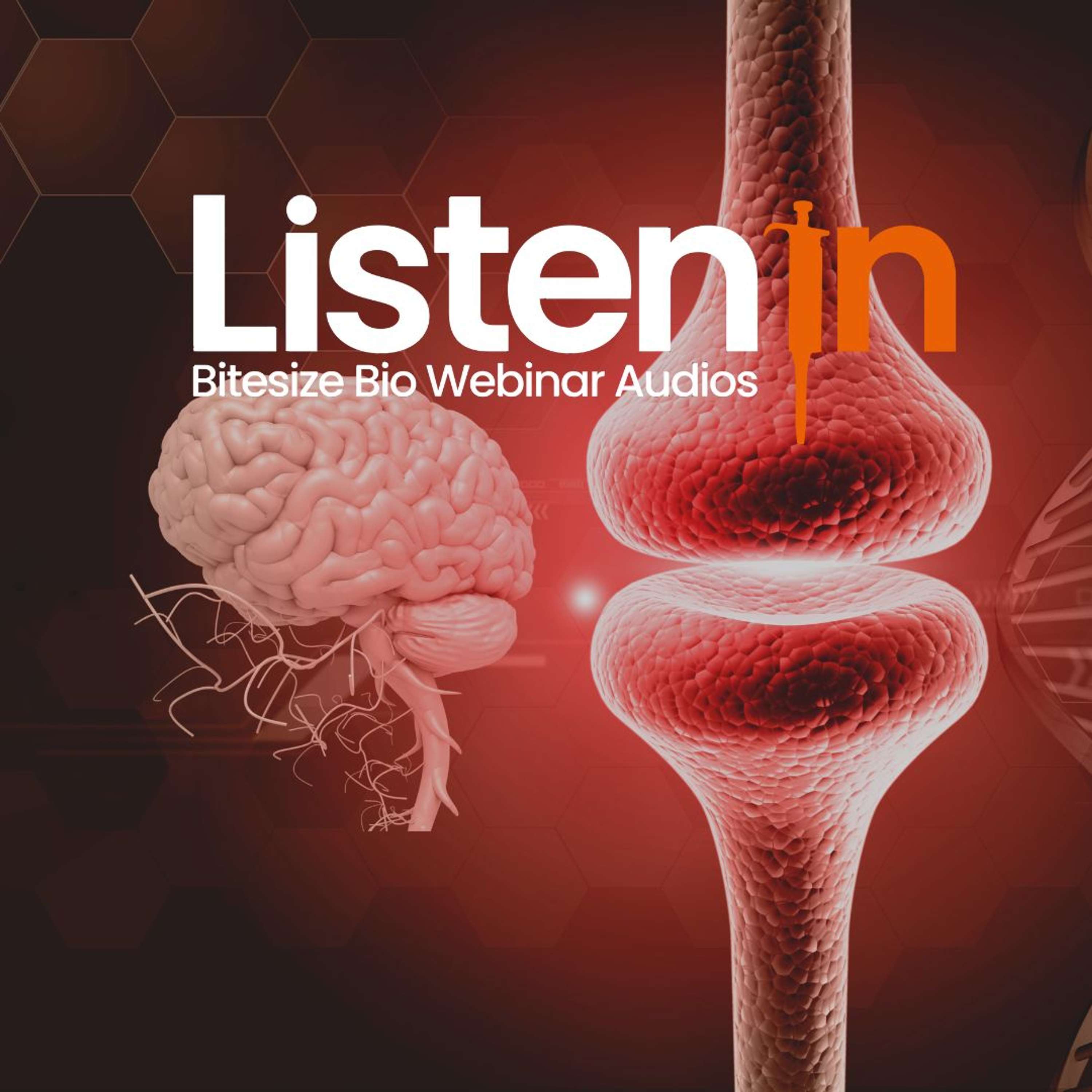 Listen In - Bitesize Bio Webinar AudiosCellular Crosstalk in Neurodevelopmental DisordersInspired by mutations associated with neurodevelopmental disorders, Prof. Dr. Silvia Cappello’s group at the Ludwig Maximilian University of Munich aims to understand the role of extracellular mechanisms essential for the correct development of the human brain.Their research focuses on intrinsic and extrinsic mechanisms contributing to the formation of the brain by examining mutations in genes influencing cell-cell contacts, the extracellular matrix, and the secretion of vesicles.In this episode of Listen In, Silvia presents the latest research that makes an important contribution to our understanding of cell non-autonomous mechanisms in the development of ne...2024-06-171h 03
Listen In - Bitesize Bio Webinar AudiosCellular Crosstalk in Neurodevelopmental DisordersInspired by mutations associated with neurodevelopmental disorders, Prof. Dr. Silvia Cappello’s group at the Ludwig Maximilian University of Munich aims to understand the role of extracellular mechanisms essential for the correct development of the human brain.Their research focuses on intrinsic and extrinsic mechanisms contributing to the formation of the brain by examining mutations in genes influencing cell-cell contacts, the extracellular matrix, and the secretion of vesicles.In this episode of Listen In, Silvia presents the latest research that makes an important contribution to our understanding of cell non-autonomous mechanisms in the development of ne...2024-06-171h 03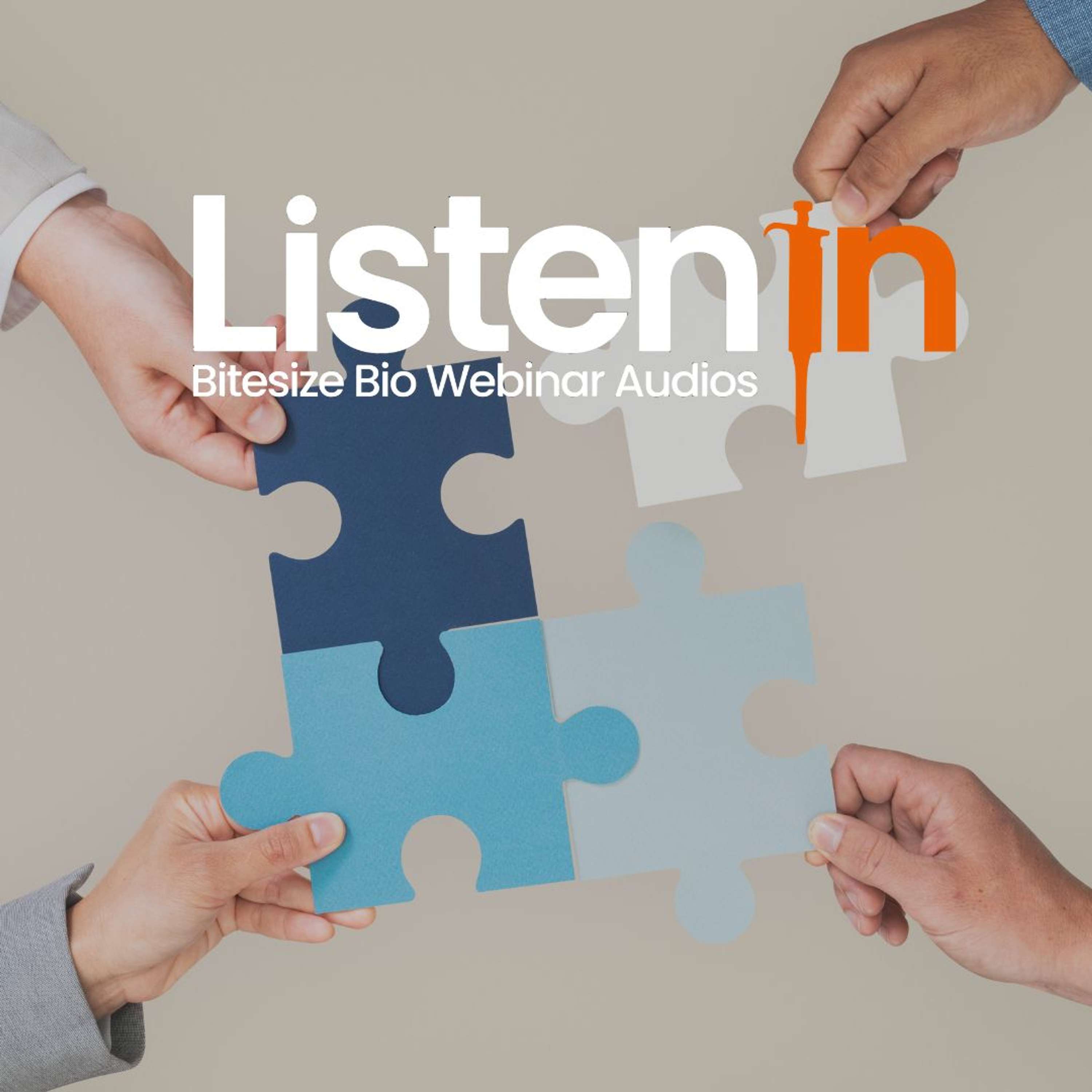 Listen In - Bitesize Bio Webinar AudiosApproaches for More Transparent, Rigorous, and Reproducible ResearchImproving open science and research reproducibility is both a technical and a social challenge.But how do we do it?One way is to design, conduct, and report research that can maximize the impact of our individual and collective investment in research. Plus, changing the research culture to prioritize 'getting it right' over 'getting it published' promotes transparency and reproducibility without losing the engine of innovation and discovery that drives scientific inquiry.In this episode of Listen In, get an overview of the fundamental challenges that reduce the credibility and reproducibility...2024-06-0348 min
Listen In - Bitesize Bio Webinar AudiosApproaches for More Transparent, Rigorous, and Reproducible ResearchImproving open science and research reproducibility is both a technical and a social challenge.But how do we do it?One way is to design, conduct, and report research that can maximize the impact of our individual and collective investment in research. Plus, changing the research culture to prioritize 'getting it right' over 'getting it published' promotes transparency and reproducibility without losing the engine of innovation and discovery that drives scientific inquiry.In this episode of Listen In, get an overview of the fundamental challenges that reduce the credibility and reproducibility...2024-06-0348 min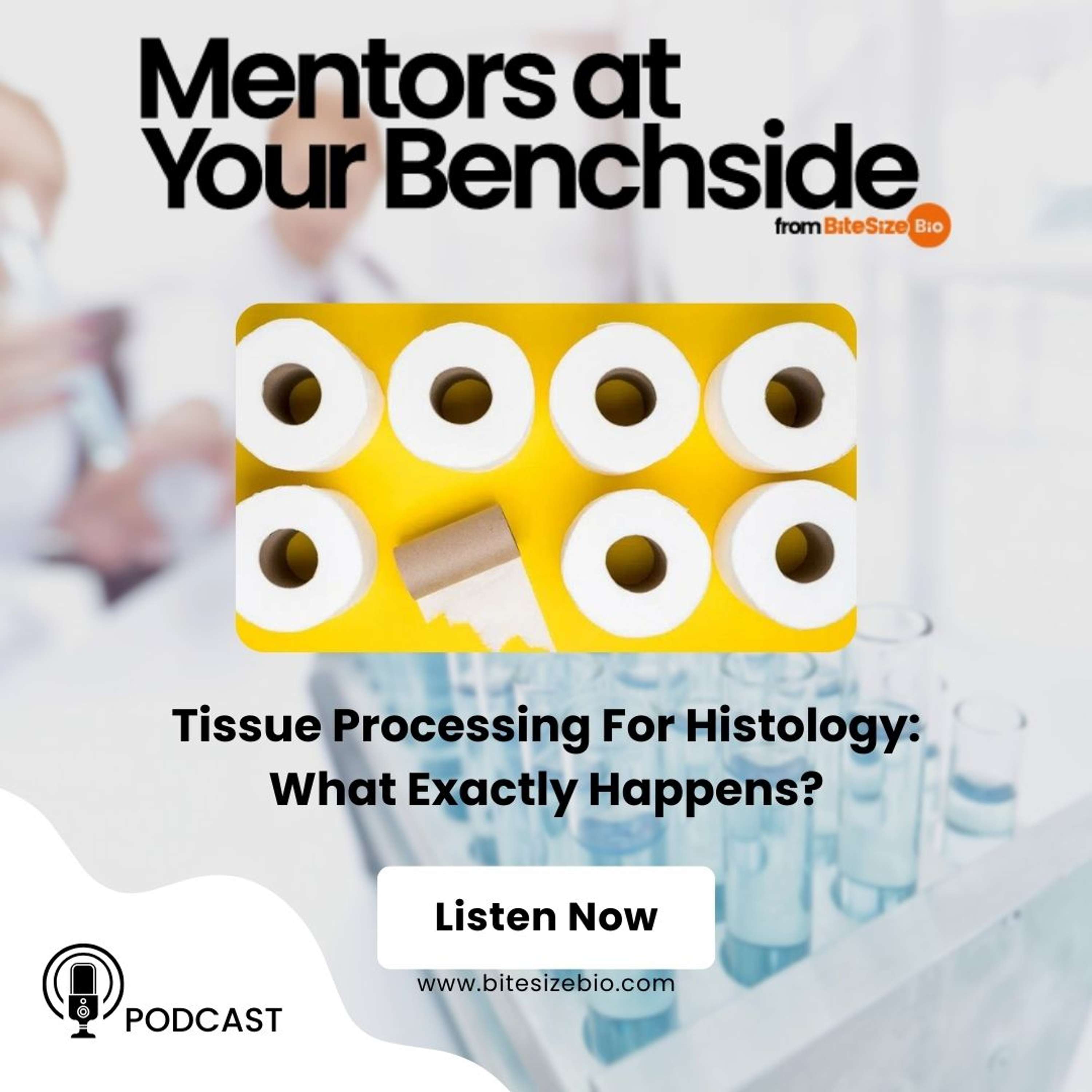 Mentors at Your BenchsideTissue Processing For Histology: What Exactly Happens?#106 — Transforming a tissue sample into a slide ready for microscopic exploration involves a series of critical steps. Among these, tissue processing is a fundamental phase bridging tissue fixation and the embedding/sectioning of paraffin blocks.In this episode, discover what exactly happens in this vital in-between stage, and learn about the six steps that ensure your samples are ready for microscopic examination. [1]And while you're here, check out our related articles on tissue fixation and embedding/sectioning [2,3], and the five important stages in histology slide preparation. [4]Resources:1. Tissue Processing For Histology: What Ex...2024-05-2806 min
Mentors at Your BenchsideTissue Processing For Histology: What Exactly Happens?#106 — Transforming a tissue sample into a slide ready for microscopic exploration involves a series of critical steps. Among these, tissue processing is a fundamental phase bridging tissue fixation and the embedding/sectioning of paraffin blocks.In this episode, discover what exactly happens in this vital in-between stage, and learn about the six steps that ensure your samples are ready for microscopic examination. [1]And while you're here, check out our related articles on tissue fixation and embedding/sectioning [2,3], and the five important stages in histology slide preparation. [4]Resources:1. Tissue Processing For Histology: What Ex...2024-05-2806 min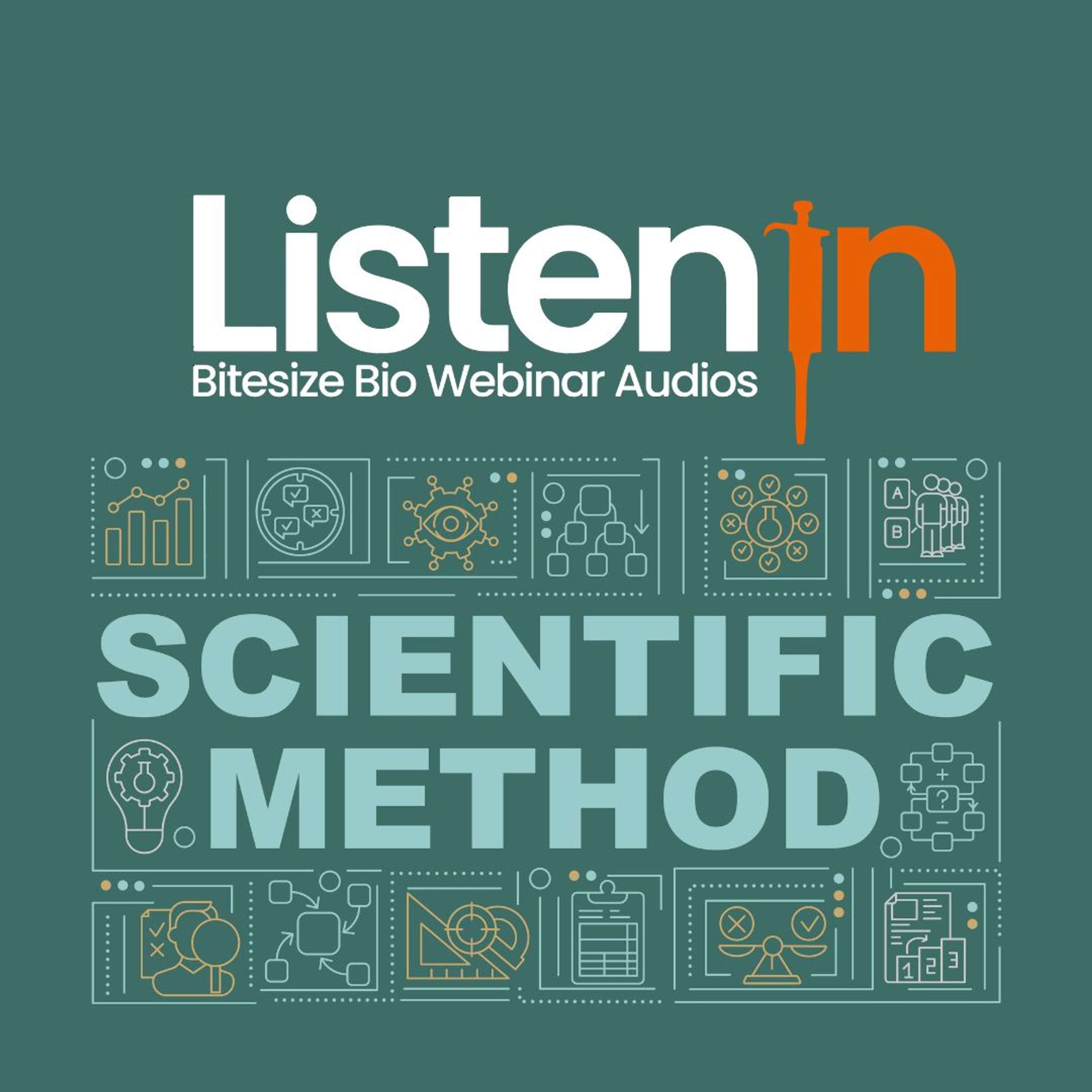 Listen In - Bitesize Bio Webinar AudiosConfirmation Bias and The Scientific Method II: Applying the Scientific MethodFor many researchers, modern science has become about getting results rather than asking questions. Results mean publications, and publications mean more funding. However, results are not the objective of the scientific method, which involves proposing an answer to a question, designing experiments to determine whether the proposed answer is true or false, and objectively interpreting the results.This episode of Listen In explores the definition of the scientific method and how to apply it to your research.Get a handle on the scientific method with a clear definition, and learn how to apply...2024-05-271h 18
Listen In - Bitesize Bio Webinar AudiosConfirmation Bias and The Scientific Method II: Applying the Scientific MethodFor many researchers, modern science has become about getting results rather than asking questions. Results mean publications, and publications mean more funding. However, results are not the objective of the scientific method, which involves proposing an answer to a question, designing experiments to determine whether the proposed answer is true or false, and objectively interpreting the results.This episode of Listen In explores the definition of the scientific method and how to apply it to your research.Get a handle on the scientific method with a clear definition, and learn how to apply...2024-05-271h 18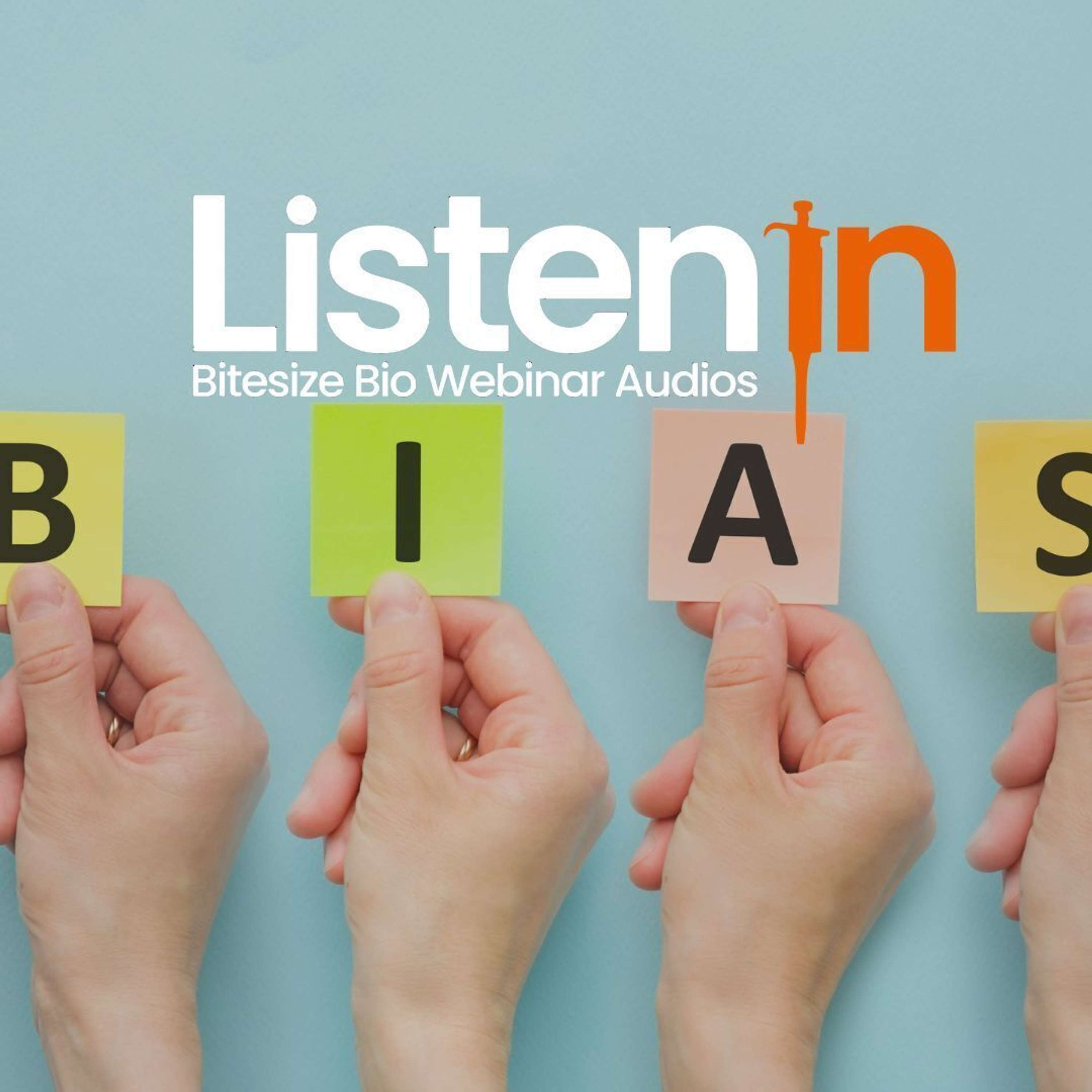 Listen In - Bitesize Bio Webinar AudiosConfirmation Bias and The Scientific Method I: How to Avoid Confirmation BiasFor many researchers, modern science has become about getting results rather than asking questions. Results mean publications, and publications mean more funding. However, results are not the objective of the scientific method, which involves proposing an answer to a question, designing experiments to determine whether the proposed answer is true or false, and objectively interpreting the results.Nonetheless, the results-focused attitude to doing science is widespread, and it comes with a huge drawback—it encourages confirmation bias—making us prone to searching for evidence and interpreting findings to support proposed answers we believe to be true...2024-05-2056 min
Listen In - Bitesize Bio Webinar AudiosConfirmation Bias and The Scientific Method I: How to Avoid Confirmation BiasFor many researchers, modern science has become about getting results rather than asking questions. Results mean publications, and publications mean more funding. However, results are not the objective of the scientific method, which involves proposing an answer to a question, designing experiments to determine whether the proposed answer is true or false, and objectively interpreting the results.Nonetheless, the results-focused attitude to doing science is widespread, and it comes with a huge drawback—it encourages confirmation bias—making us prone to searching for evidence and interpreting findings to support proposed answers we believe to be true...2024-05-2056 min Listen In - Bitesize Bio Webinar AudiosThe 12Rs Framework: Enabling High-quality Humane Research Involving AnimalsIn this episode of Listen In, see how emerging and global challenges of conducting ethical animal research have led to the 12Rs Framework to guide humane experimental techniques in animal studies and other research areas. The Principles of Humane Experimental Technique, the 3Rs (Replacement, Refinement, and Reduction), have been the mainstay of humane research involving animals for over fifty years. However, it is becoming increasingly apparent that to enable high-quality ethical and humane science involving animals, other ethical constructs and issues, for example, research culture, reproducibility, reliability, and responsibility, must also be considered. ...2024-05-0651 min
Listen In - Bitesize Bio Webinar AudiosThe 12Rs Framework: Enabling High-quality Humane Research Involving AnimalsIn this episode of Listen In, see how emerging and global challenges of conducting ethical animal research have led to the 12Rs Framework to guide humane experimental techniques in animal studies and other research areas. The Principles of Humane Experimental Technique, the 3Rs (Replacement, Refinement, and Reduction), have been the mainstay of humane research involving animals for over fifty years. However, it is becoming increasingly apparent that to enable high-quality ethical and humane science involving animals, other ethical constructs and issues, for example, research culture, reproducibility, reliability, and responsibility, must also be considered. ...2024-05-0651 min Listen In - Bitesize Bio Webinar AudiosBack to Buffer Basics: Everything You Need to Know About BuffersBuffers are critical to nearly all our experiments. Poorly prepared buffers lead to failed Western blots, poor protein yields, flat binding curves—and wasted time. Understanding why you need buffers, knowing how to choose the right one, and troubleshooting buffer issues are fundamental skills you can apply to make all your experiments work better—and you only need to learn how to prepare them correctly once.In this episode, dive deep into the world of chemical buffers. Explore how to select the best buffer for your experiments, share practical tips on preparing buffer solutions, and trou...2024-04-0157 min
Listen In - Bitesize Bio Webinar AudiosBack to Buffer Basics: Everything You Need to Know About BuffersBuffers are critical to nearly all our experiments. Poorly prepared buffers lead to failed Western blots, poor protein yields, flat binding curves—and wasted time. Understanding why you need buffers, knowing how to choose the right one, and troubleshooting buffer issues are fundamental skills you can apply to make all your experiments work better—and you only need to learn how to prepare them correctly once.In this episode, dive deep into the world of chemical buffers. Explore how to select the best buffer for your experiments, share practical tips on preparing buffer solutions, and trou...2024-04-0157 min Mentors at Your BenchsideHow to Write an Effective Research Interest Statement#97 — A research interest statement is essential to successfully apply for an academic job. In this episode, we delve into how to craft an outstanding one. [1]We cover strategies to outline your past, current, and future research in a concise format. We also explain other key elements such as, creating a compelling introduction, detailing research plans, aligning with targeted labs or departments, and writing a strong conclusion. Plus, get tips on personalizing your applications while maintaining clarity and conciseness.While you're here, check out our related article packed with tips to help you shine at your ne...2024-02-1307 min
Mentors at Your BenchsideHow to Write an Effective Research Interest Statement#97 — A research interest statement is essential to successfully apply for an academic job. In this episode, we delve into how to craft an outstanding one. [1]We cover strategies to outline your past, current, and future research in a concise format. We also explain other key elements such as, creating a compelling introduction, detailing research plans, aligning with targeted labs or departments, and writing a strong conclusion. Plus, get tips on personalizing your applications while maintaining clarity and conciseness.While you're here, check out our related article packed with tips to help you shine at your ne...2024-02-1307 min Listen In - Bitesize Bio Webinar AudiosJump into 3D Organoids: Basic Culture Techniques and Advanced ApplicationsOrganoids are three-dimensional in vitro cultures derived directly from patient tissues or induced pluripotent stem cells (iPSC) and embryonic stem cells. They self-organize to generate structures that resemble the tissue of origin and recapitulate the key physiological functions of the parental organ. In this episode of Listen In, explore the benefits of organoids as infectious disease models and drug screening vehicles, learn how to start organoid culture in your laboratory, and discover a portfolio of organoids for your research applications. Watch the full presentation here: https://events.bitesizebio.com/jump-into-3d-organoids-basic/joinBrowse...2024-02-051h 01
Listen In - Bitesize Bio Webinar AudiosJump into 3D Organoids: Basic Culture Techniques and Advanced ApplicationsOrganoids are three-dimensional in vitro cultures derived directly from patient tissues or induced pluripotent stem cells (iPSC) and embryonic stem cells. They self-organize to generate structures that resemble the tissue of origin and recapitulate the key physiological functions of the parental organ. In this episode of Listen In, explore the benefits of organoids as infectious disease models and drug screening vehicles, learn how to start organoid culture in your laboratory, and discover a portfolio of organoids for your research applications. Watch the full presentation here: https://events.bitesizebio.com/jump-into-3d-organoids-basic/joinBrowse...2024-02-051h 01 Mentors at Your BenchsideOverhang PCR: Add Missing DNA Sequences Using Primers#95 — Have you ever accidentally forgotten to add the Kozak consensus sequence to the start of a coding gene? Or forgotten to include the stop codon? Did you clone something, then realize you wanted to tag it with something? Or do you want to add restriction enzymes to your PCR product to make it easier to clone into a plasmid? Overhang PCR may be your answer!In this episode, we discuss what overhang PCR is, its benefits, and how to perform it in the lab. [1] While you are here, check out our article on TA cloning? [2]Re...2024-01-3005 min
Mentors at Your BenchsideOverhang PCR: Add Missing DNA Sequences Using Primers#95 — Have you ever accidentally forgotten to add the Kozak consensus sequence to the start of a coding gene? Or forgotten to include the stop codon? Did you clone something, then realize you wanted to tag it with something? Or do you want to add restriction enzymes to your PCR product to make it easier to clone into a plasmid? Overhang PCR may be your answer!In this episode, we discuss what overhang PCR is, its benefits, and how to perform it in the lab. [1] While you are here, check out our article on TA cloning? [2]Re...2024-01-3005 min Mentors at Your BenchsideHow to Become a Bioinformatician#93 — Bioinformatics is an interdisciplinary field that combines mathematics, computer science, physics, and biology to help answer key questions in modern biological sciences research.In this episode, we’ve got the lowdown on the training you’ll need to pursue this career path, and a handy list of resources to get you started on your learning. [1] Plus, check out our related article on some of the ways that scientists from diverse fields use bioinformatics. [2]Resources:1. How to Become a Bioinformatician. Available at: https://bitesizebio.com/38236/how-to-become-a-bioinformatician/2. Bioinformatics: It’s Not All About Genomics. Availabl...2024-01-1605 min
Mentors at Your BenchsideHow to Become a Bioinformatician#93 — Bioinformatics is an interdisciplinary field that combines mathematics, computer science, physics, and biology to help answer key questions in modern biological sciences research.In this episode, we’ve got the lowdown on the training you’ll need to pursue this career path, and a handy list of resources to get you started on your learning. [1] Plus, check out our related article on some of the ways that scientists from diverse fields use bioinformatics. [2]Resources:1. How to Become a Bioinformatician. Available at: https://bitesizebio.com/38236/how-to-become-a-bioinformatician/2. Bioinformatics: It’s Not All About Genomics. Availabl...2024-01-1605 min Mentors at Your Benchside8 Cell Lysis Methods to Break Cell Walls#92 — We all need to lyse cells to extract the goodness—our samples—from them.However, there are many cell lysis methods. Some are harsh, while some are gentle. Some are laborious, while some are easy. Some require dedicated equipment, while some do not. So which one do you choose?In this episode, we cover eight cell lysis methods for your experiments. [1] For extra information to help you pick a lysis method, check out our article on the different types of cell walls. [2]Resources:1. 8 Cell Lysis Methods to Break Cell Walls. Available at: ht...2024-01-0907 min
Mentors at Your Benchside8 Cell Lysis Methods to Break Cell Walls#92 — We all need to lyse cells to extract the goodness—our samples—from them.However, there are many cell lysis methods. Some are harsh, while some are gentle. Some are laborious, while some are easy. Some require dedicated equipment, while some do not. So which one do you choose?In this episode, we cover eight cell lysis methods for your experiments. [1] For extra information to help you pick a lysis method, check out our article on the different types of cell walls. [2]Resources:1. 8 Cell Lysis Methods to Break Cell Walls. Available at: ht...2024-01-0907 min Mentors at Your BenchsideChoosing The Right Blood Collection Tubes#87 — Selecting the right blood collection tubes for your experiment is crucial. But do you know what tubes to use for which type of blood sample?In this episode, we cover the nuances of choosing the appropriate blood collection tubes, a choice that hinges largely on whether you're aiming to collect serum or plasma samples. Understand the vital role that different tubes play in either fostering or preventing blood clotting and how these subtle differences can significantly impact the outcomes of your experiments. [1]Whether you are venturing into the world of hematology microscopy, exploring genetic material, or...2023-11-2808 min
Mentors at Your BenchsideChoosing The Right Blood Collection Tubes#87 — Selecting the right blood collection tubes for your experiment is crucial. But do you know what tubes to use for which type of blood sample?In this episode, we cover the nuances of choosing the appropriate blood collection tubes, a choice that hinges largely on whether you're aiming to collect serum or plasma samples. Understand the vital role that different tubes play in either fostering or preventing blood clotting and how these subtle differences can significantly impact the outcomes of your experiments. [1]Whether you are venturing into the world of hematology microscopy, exploring genetic material, or...2023-11-2808 min Mentors at Your BenchsideA Step-by-Step Guide to Designing qPCR Primers#86 — qPCR primer design is a bit of science, a bit of magic, and a little bit of luck. In this episode, we cover the science of qPCR primer design, a cornerstone in conducting successful qPCR or RT-qPCR assays for gene expression analysis. [1] Get top tips and learn why dedicating time to crafting high-quality primers can save your experiment from poor data and resource wastage. [2] We guide you through utilizing popular tools like NCBI's Primer-BLAST for your qPCR primer designs, alongside introducing alternative online resources to aid in your experimentation journey. [3] Whether you're beginning your research journey or lo...2023-11-2105 min
Mentors at Your BenchsideA Step-by-Step Guide to Designing qPCR Primers#86 — qPCR primer design is a bit of science, a bit of magic, and a little bit of luck. In this episode, we cover the science of qPCR primer design, a cornerstone in conducting successful qPCR or RT-qPCR assays for gene expression analysis. [1] Get top tips and learn why dedicating time to crafting high-quality primers can save your experiment from poor data and resource wastage. [2] We guide you through utilizing popular tools like NCBI's Primer-BLAST for your qPCR primer designs, alongside introducing alternative online resources to aid in your experimentation journey. [3] Whether you're beginning your research journey or lo...2023-11-2105 min Listen In - Bitesize Bio Webinar AudiosTen Common Statistical Mistakes to Watch out for When Writing or Reviewing a ManuscriptSome scientific papers are unbelievable as they showcase experimental excellence that we did not think possible. These papers astound us with their groundbreaking findings and meticulous methodologies. However, alongside these unbelievably good papers, there are papers that are unbelievable due to the pervasive presence of statistical mistakes that undermine their credibility. Whether due to negligence, lack of expertise, or a rush to publish, these errors cast doubt on the validity of the reported results and conclusions. In this episode of Listen In, JJ Orban de Xivry delves into the ten most common statistical mistakes that...2023-10-3051 min
Listen In - Bitesize Bio Webinar AudiosTen Common Statistical Mistakes to Watch out for When Writing or Reviewing a ManuscriptSome scientific papers are unbelievable as they showcase experimental excellence that we did not think possible. These papers astound us with their groundbreaking findings and meticulous methodologies. However, alongside these unbelievably good papers, there are papers that are unbelievable due to the pervasive presence of statistical mistakes that undermine their credibility. Whether due to negligence, lack of expertise, or a rush to publish, these errors cast doubt on the validity of the reported results and conclusions. In this episode of Listen In, JJ Orban de Xivry delves into the ten most common statistical mistakes that...2023-10-3051 min Mentors at Your BenchsideA Beginner’s Guide to Hematoxylin and Eosin Staining#80 — Dive into the fascinating world of histology as we explore the basics of Hematoxylin and Eosin (H&E) staining, a cornerstone technique in tissue study. [1]Whether you're a budding biologist or just curious about cellular structures, this episode of Mentors At Your Benchside is your introductory guide to the history of H&E staining, its mechanism of action, and the structures it effectively stains. Discover how the positive charge of hematoxylin stains nucleic acids blue, and how the negatively charged eosin brings out the pink in proteins.And, if you want to go beyond hematoxylin an...2023-10-1005 min
Mentors at Your BenchsideA Beginner’s Guide to Hematoxylin and Eosin Staining#80 — Dive into the fascinating world of histology as we explore the basics of Hematoxylin and Eosin (H&E) staining, a cornerstone technique in tissue study. [1]Whether you're a budding biologist or just curious about cellular structures, this episode of Mentors At Your Benchside is your introductory guide to the history of H&E staining, its mechanism of action, and the structures it effectively stains. Discover how the positive charge of hematoxylin stains nucleic acids blue, and how the negatively charged eosin brings out the pink in proteins.And, if you want to go beyond hematoxylin an...2023-10-1005 min Mentors at Your Benchside5 Ingredients for the Perfect Protein Purification Buffer#79 — Are you struggling to keep your proteins "happy" and active for your experiments? In this episode of Mentors At Your Benchside, we dive into the five critical elements you need to design the ideal protein purification buffer: pH, the buffer system, salt concentration, reducing agents, and stabilizing additives. [1] Learn how buffers work, [2] and how to navigate the delicate balance of these factors to prevent protein aggregation and keep your purified proteins soluble and active. [3] Tune in for a simplified guide to mastering your protein purification buffer.Resources:1. 5 Ingredients for the Perfect Protein Purification Buffer. Av...2023-10-0310 min
Mentors at Your Benchside5 Ingredients for the Perfect Protein Purification Buffer#79 — Are you struggling to keep your proteins "happy" and active for your experiments? In this episode of Mentors At Your Benchside, we dive into the five critical elements you need to design the ideal protein purification buffer: pH, the buffer system, salt concentration, reducing agents, and stabilizing additives. [1] Learn how buffers work, [2] and how to navigate the delicate balance of these factors to prevent protein aggregation and keep your purified proteins soluble and active. [3] Tune in for a simplified guide to mastering your protein purification buffer.Resources:1. 5 Ingredients for the Perfect Protein Purification Buffer. Av...2023-10-0310 min Listen In - Bitesize Bio Webinar AudiosReproducibility: Mastering the Art of PipettingHave you ever transferred glycerol or ethanol with a pipette? We all know how hard it is, and we've all been dubious about the accuracy of our final volumes. While you probably realize that your liquid type and pipetting technique can influence your analysis results, you might be less sure about what pipettes to use when your assays involve challenging liquids and ultra-repetitive steps.In this episode of Listen In, the experts at Eppendorf show you how to optimize liquid handling using simple tricks to ensure that "the pipette" does not influence your analysis results.2023-10-021h 24
Listen In - Bitesize Bio Webinar AudiosReproducibility: Mastering the Art of PipettingHave you ever transferred glycerol or ethanol with a pipette? We all know how hard it is, and we've all been dubious about the accuracy of our final volumes. While you probably realize that your liquid type and pipetting technique can influence your analysis results, you might be less sure about what pipettes to use when your assays involve challenging liquids and ultra-repetitive steps.In this episode of Listen In, the experts at Eppendorf show you how to optimize liquid handling using simple tricks to ensure that "the pipette" does not influence your analysis results.2023-10-021h 24 Listen In - Bitesize Bio Webinar AudiosErrors and Misconduct in Biomedical ResearchWhat are the motives behind science misconduct? How is data manipulated to evidence dubious results? And do you think you can spot edited and faked data? Any fraud in science is too much, but the reasons for it are complex. In this episode of Listen In, join forensics detective Elisabeth Bik and explore the answers to these questions. See the work she has done uncovering scientific misconduct, and find out if you have a forensic eye as she presents genuine and manipulated data. You will also hear examples of how scientific misconduct isn't...2023-09-041h 03
Listen In - Bitesize Bio Webinar AudiosErrors and Misconduct in Biomedical ResearchWhat are the motives behind science misconduct? How is data manipulated to evidence dubious results? And do you think you can spot edited and faked data? Any fraud in science is too much, but the reasons for it are complex. In this episode of Listen In, join forensics detective Elisabeth Bik and explore the answers to these questions. See the work she has done uncovering scientific misconduct, and find out if you have a forensic eye as she presents genuine and manipulated data. You will also hear examples of how scientific misconduct isn't...2023-09-041h 03 Listen In - Bitesize Bio Webinar AudiosGarbage In, Garbage Out: Sample Prep for Flow CytometryWhat's more disappointing than running your flow cytometry sample to discover it's rubbish? Especially considering time on cytometers can be precious, even more so if you've booked onto an in-demand one at a busy core facility. You've done all the work and all the waiting—for nothing. If this scenario sounds familiar, this episode of Listen In is for you.Jessica Rowley, Flow Cytometry Facility Manager at Imperial College London, explains how to prepare flow samples optimized for your experiments, to save you time and avoid disappointment.She has worked with hu...2023-08-281h 00
Listen In - Bitesize Bio Webinar AudiosGarbage In, Garbage Out: Sample Prep for Flow CytometryWhat's more disappointing than running your flow cytometry sample to discover it's rubbish? Especially considering time on cytometers can be precious, even more so if you've booked onto an in-demand one at a busy core facility. You've done all the work and all the waiting—for nothing. If this scenario sounds familiar, this episode of Listen In is for you.Jessica Rowley, Flow Cytometry Facility Manager at Imperial College London, explains how to prepare flow samples optimized for your experiments, to save you time and avoid disappointment.She has worked with hu...2023-08-281h 00 Listen In - Bitesize Bio Webinar AudiosConsistent, Error-Free Writing: Tips and Tricks for Time-starved ScientistsScientific writing is an art that requires as much attention and proficiency as your hands-on lab work. When done right, it can significantly contribute to your scientific endeavors. But, if not taken seriously, inconsistent language, formatting, and terminology can hinder your work's clarity and distract from your remarkable scientific findings.In this episode of Listen In, our Content Creation Manager, Laura Grassie, unravels the complexities of consistent scientific writing and helps you steer clear of common pitfalls that make your work look sloppy. She introduces you to powerful, simple strategies that can significantly enhance the coherence, clarity...2023-08-0749 min
Listen In - Bitesize Bio Webinar AudiosConsistent, Error-Free Writing: Tips and Tricks for Time-starved ScientistsScientific writing is an art that requires as much attention and proficiency as your hands-on lab work. When done right, it can significantly contribute to your scientific endeavors. But, if not taken seriously, inconsistent language, formatting, and terminology can hinder your work's clarity and distract from your remarkable scientific findings.In this episode of Listen In, our Content Creation Manager, Laura Grassie, unravels the complexities of consistent scientific writing and helps you steer clear of common pitfalls that make your work look sloppy. She introduces you to powerful, simple strategies that can significantly enhance the coherence, clarity...2023-08-0749 min Listen In - Bitesize Bio Webinar AudiosLab Meetings Live: Career Paths for BioscientistsAre you an early career scientist looking for guidance on your career path? Or you're a seasoned researcher considering a career change and want to know what's out there.We've brought together a panel of experts and bioscientists with a wide range of experience to share their insights and help you carve out the best career possible. Get advice and tools to forge a path that suits you—inside or outside academia.Our panel shares their personal stories and insights into the various career paths available to bioscientists. Plus, gain valuable insights and a...2023-07-241h 03
Listen In - Bitesize Bio Webinar AudiosLab Meetings Live: Career Paths for BioscientistsAre you an early career scientist looking for guidance on your career path? Or you're a seasoned researcher considering a career change and want to know what's out there.We've brought together a panel of experts and bioscientists with a wide range of experience to share their insights and help you carve out the best career possible. Get advice and tools to forge a path that suits you—inside or outside academia.Our panel shares their personal stories and insights into the various career paths available to bioscientists. Plus, gain valuable insights and a...2023-07-241h 03 Listen In - Bitesize Bio Webinar AudiosTop tips for writing a research posterAre you excited, nervous, or perhaps terrified about presenting a poster for an upcoming conference? Poster sessions can be daunting, no matter if this is your first poster experience or if you've done them before.Poster sessions are an amazing opportunity to get feedback on your research, make vital connections with others in your field, and hone your presentation skills.But before you can showcase your amazing research findings, you need to design a poster that captures the attention of conference attendees. In this tutorial, we'll be sharing our top tips and handy hints for...2023-04-201h 21
Listen In - Bitesize Bio Webinar AudiosTop tips for writing a research posterAre you excited, nervous, or perhaps terrified about presenting a poster for an upcoming conference? Poster sessions can be daunting, no matter if this is your first poster experience or if you've done them before.Poster sessions are an amazing opportunity to get feedback on your research, make vital connections with others in your field, and hone your presentation skills.But before you can showcase your amazing research findings, you need to design a poster that captures the attention of conference attendees. In this tutorial, we'll be sharing our top tips and handy hints for...2023-04-201h 21 Listen In - Bitesize Bio Webinar AudiosWriting for the Web—Tips and Advice for ScientistsAre you looking to share your science online with a broader audience? Or maybe you are considering a career shift and want to move into science writing.There are many reasons you might want to start writing content online. While you may have experience writing papers, grants, and other content, writing specifically for the web requires different considerations.In this episode of Listen In, you'll discover how writing for the web differs from traditional writing, get top tips for structuring and writing content for the web, and learn the basics of search engine optimization (SEO).2023-04-1347 min
Listen In - Bitesize Bio Webinar AudiosWriting for the Web—Tips and Advice for ScientistsAre you looking to share your science online with a broader audience? Or maybe you are considering a career shift and want to move into science writing.There are many reasons you might want to start writing content online. While you may have experience writing papers, grants, and other content, writing specifically for the web requires different considerations.In this episode of Listen In, you'll discover how writing for the web differs from traditional writing, get top tips for structuring and writing content for the web, and learn the basics of search engine optimization (SEO).2023-04-1347 min Listen In - Bitesize Bio Webinar AudiosGrammar 101 for ScientistsWe all dread the feedback on our written work, but it doesn't have to be so daunting! Join the Bitesize Bio editorial team for a fun and friendly introduction to grammar for scientists, as we cover everything from punctuation to the passive voice. We'll talk you through some of the most common grammar pitfalls in science writing and show you how to avoid them. View the full presentation of this webinar here: https://www.youtube.com/watch?v=q8iA4mwMQn8Browse all episodes of the Listen In Series here: https://bitesizebio.com/l...2023-04-061h 22
Listen In - Bitesize Bio Webinar AudiosGrammar 101 for ScientistsWe all dread the feedback on our written work, but it doesn't have to be so daunting! Join the Bitesize Bio editorial team for a fun and friendly introduction to grammar for scientists, as we cover everything from punctuation to the passive voice. We'll talk you through some of the most common grammar pitfalls in science writing and show you how to avoid them. View the full presentation of this webinar here: https://www.youtube.com/watch?v=q8iA4mwMQn8Browse all episodes of the Listen In Series here: https://bitesizebio.com/l...2023-04-061h 22 Listen In - Bitesize Bio Webinar AudiosWhat is science writing? A guide for researchers considering a career changeAre you a scientist looking for a change of pace? Have you ever considered using your scientific knowledge and communication skills to become a science writer or communicator? Well, look no further! In this exciting episode of Listen In, we take you on a journey exploring the many different avenues of science writing—from technical medical writing to fun and relaxed blog and journalism styles. We'll also give you the inside scoop on how to break into the field, where to find job opportunities, and how to create a top-notch portfolio that will get you no...2023-03-301h 02
Listen In - Bitesize Bio Webinar AudiosWhat is science writing? A guide for researchers considering a career changeAre you a scientist looking for a change of pace? Have you ever considered using your scientific knowledge and communication skills to become a science writer or communicator? Well, look no further! In this exciting episode of Listen In, we take you on a journey exploring the many different avenues of science writing—from technical medical writing to fun and relaxed blog and journalism styles. We'll also give you the inside scoop on how to break into the field, where to find job opportunities, and how to create a top-notch portfolio that will get you no...2023-03-301h 02 Listen In - Bitesize Bio Webinar Audios5 Principles for Creating a Rewarding Career Inside or Outside of the LabOnly a tiny percentage of bioscience PhD students will progress to a PI position. This statistic means that ~95% of us need to find a career path other than the traditional academic one most of us aim for when we set out as scientists.Listen in to hear from Bitesize Bio's founder, Dr. Nick Oswald, and discover five simple but powerful principles you can use to carve out the career that best suits, excites, and rewards you inside or outside of the lab.You'll discover:• How to decide if the academic career path is for yo...2023-03-231h 01
Listen In - Bitesize Bio Webinar Audios5 Principles for Creating a Rewarding Career Inside or Outside of the LabOnly a tiny percentage of bioscience PhD students will progress to a PI position. This statistic means that ~95% of us need to find a career path other than the traditional academic one most of us aim for when we set out as scientists.Listen in to hear from Bitesize Bio's founder, Dr. Nick Oswald, and discover five simple but powerful principles you can use to carve out the career that best suits, excites, and rewards you inside or outside of the lab.You'll discover:• How to decide if the academic career path is for yo...2023-03-231h 01 Listen In - Bitesize Bio Webinar AudiosPrecise, high-efficiency editing of stem cells to probe human biology and model diseaseDiscover how combining two nobel-prize winning technologies—cell reprogramming and CRISPR gene editing—creates a powerful platform to study basic cell biology, development, and disease. You'll learn how this technology overcomes problems with more traditional immortalized cell models and see how it is already being used to study neurodegenerative diseases. This webinar is presented by Bill Skarnes, Professor of Cellular Engineering at The Jackson Laboratory.Follow Bill and The Jackson Laboratory on Twitter.Click here to view the full presentation of this webinar.Browse all episodes of the Listen In Series here...2023-03-0250 min
Listen In - Bitesize Bio Webinar AudiosPrecise, high-efficiency editing of stem cells to probe human biology and model diseaseDiscover how combining two nobel-prize winning technologies—cell reprogramming and CRISPR gene editing—creates a powerful platform to study basic cell biology, development, and disease. You'll learn how this technology overcomes problems with more traditional immortalized cell models and see how it is already being used to study neurodegenerative diseases. This webinar is presented by Bill Skarnes, Professor of Cellular Engineering at The Jackson Laboratory.Follow Bill and The Jackson Laboratory on Twitter.Click here to view the full presentation of this webinar.Browse all episodes of the Listen In Series here...2023-03-0250 min Listen In - Bitesize Bio Webinar AudiosCRISPRi as an alternative to CRISPR-cut in human iPSCsGet help and advice with designing and using CRISPRi in human iPSCs. Discover that CRISPRi is an efficient way to silence transcription, sometimes in a complete manner, with loss of H3K4me3 activation marks. Learn how to eliminate side effects of clonal expansion and sites of viral vector integration by using a method that avoids single-cell selection. You'll hear considerations of the challenges of the methods, such as target-specific lentiviral silencing, efficient silencing levels, and off-target effects. Plus, we compare the method with CRISPR-cut and discuss the suitability and variability of these methods at different loci based on...2023-02-1622 min
Listen In - Bitesize Bio Webinar AudiosCRISPRi as an alternative to CRISPR-cut in human iPSCsGet help and advice with designing and using CRISPRi in human iPSCs. Discover that CRISPRi is an efficient way to silence transcription, sometimes in a complete manner, with loss of H3K4me3 activation marks. Learn how to eliminate side effects of clonal expansion and sites of viral vector integration by using a method that avoids single-cell selection. You'll hear considerations of the challenges of the methods, such as target-specific lentiviral silencing, efficient silencing levels, and off-target effects. Plus, we compare the method with CRISPR-cut and discuss the suitability and variability of these methods at different loci based on...2023-02-1622 min Mentors at Your Benchside8 Steps to More Successful Experiments#48 — One of the critical skills required for any scientist is the ability to consistently design and carry out successful experiments. It’s also vital that any experiments can be replicated. There are, of course, many variables that can cause an experiment to fail, but there are some basic steps that, if taken routinely, can increase your chances of success.In this episode, we've rounded up our 8 top tips to help you achieve perfect experimental procedures!Read the original article for more resources to help you achieve experimental success. [1] If you're struggling to decipher your sticky note...2023-02-0705 min
Mentors at Your Benchside8 Steps to More Successful Experiments#48 — One of the critical skills required for any scientist is the ability to consistently design and carry out successful experiments. It’s also vital that any experiments can be replicated. There are, of course, many variables that can cause an experiment to fail, but there are some basic steps that, if taken routinely, can increase your chances of success.In this episode, we've rounded up our 8 top tips to help you achieve perfect experimental procedures!Read the original article for more resources to help you achieve experimental success. [1] If you're struggling to decipher your sticky note...2023-02-0705 min Mentors at Your BenchsideDoes Your h-index Measure Up?#37 — How do you measure how good you are as a scientist? How would you compare the impact of two scientists in a field? What if you had to decide which one would get a grant? One method is the h-index.In this episode, we discuss the metrics involved in measuring scientific performance, focusing on the metric of choice for many funding bodies, the h-index, and some of its limitations.Visit the original article for more resources to help you understand what the h-index is. [1]To learn more about the h-index, read the article th...2022-11-1508 min
Mentors at Your BenchsideDoes Your h-index Measure Up?#37 — How do you measure how good you are as a scientist? How would you compare the impact of two scientists in a field? What if you had to decide which one would get a grant? One method is the h-index.In this episode, we discuss the metrics involved in measuring scientific performance, focusing on the metric of choice for many funding bodies, the h-index, and some of its limitations.Visit the original article for more resources to help you understand what the h-index is. [1]To learn more about the h-index, read the article th...2022-11-1508 min Mentors at Your BenchsideKeep Calm and Spin On: The Whats and Whys of Centrifugation#30 — We have all heard about centrifugation, or more specifically, the horror stories associated with centrifugation going wrong.But don't let centrifugation scare you! In this episode, you'll learn how to properly balance, when to use the brake, what the difference is between RCF and RPM, and more.Read the full Whats and Whys of Centrifugation article for some of the most common issues that can be easily overlooked during centrifugation and why they are so important for the proper handling of a centrifuge. [1] Discover why RPM Does Not Equal RCF, and get top tips for Pr...2022-09-2910 min
Mentors at Your BenchsideKeep Calm and Spin On: The Whats and Whys of Centrifugation#30 — We have all heard about centrifugation, or more specifically, the horror stories associated with centrifugation going wrong.But don't let centrifugation scare you! In this episode, you'll learn how to properly balance, when to use the brake, what the difference is between RCF and RPM, and more.Read the full Whats and Whys of Centrifugation article for some of the most common issues that can be easily overlooked during centrifugation and why they are so important for the proper handling of a centrifuge. [1] Discover why RPM Does Not Equal RCF, and get top tips for Pr...2022-09-2910 min Mentors at Your BenchsideDNA Ligation: How it Works & 6 Top Tips#27 — Optimal conditions for DNA ligation reactions are a delicate balance between DNA molecules interacting and the enzymatic ligation reaction.In this episode, you'll discover our top 6 DNA ligation tips to improve the efficiency of your ligations and increase your cloning success rate!Read the full article to get more practical advice for optimizing DNA ligation reactions for cloning. [1] Want more cloning advice? Read about Cloning with Compatible Cohesive Ends, [2] and discover how to Remove Unwanted DNA from Vectors. [3] Also, find out why T4 DNA ligase is such a popular ligase and perhaps the only ligation en...2022-09-2008 min
Mentors at Your BenchsideDNA Ligation: How it Works & 6 Top Tips#27 — Optimal conditions for DNA ligation reactions are a delicate balance between DNA molecules interacting and the enzymatic ligation reaction.In this episode, you'll discover our top 6 DNA ligation tips to improve the efficiency of your ligations and increase your cloning success rate!Read the full article to get more practical advice for optimizing DNA ligation reactions for cloning. [1] Want more cloning advice? Read about Cloning with Compatible Cohesive Ends, [2] and discover how to Remove Unwanted DNA from Vectors. [3] Also, find out why T4 DNA ligase is such a popular ligase and perhaps the only ligation en...2022-09-2008 min Mentors at Your BenchsideDNA Precipitation: Ethanol vs. Isopropanol#12 — As a follow-up to our episode about ethanol precipitation of DNA and RNA [1], this episode explains the differences between DNA precipitation in ethanol and isopropanol, helping you to figure out which method is the best choice for your experiment.Read the full article [2] for handy protocol tips, the differences between using ethanol and isopropanol, and when to use each method.Resources:1 - https://bitesizebio.com/2007/12/04/the-basics-how-ethanol-precipitation-of-dna-and-rna-works/2 - https://bitesizebio.com/2839/dna-precipitation-ethanol-vs-isopropanol/2022-07-2807 min
Mentors at Your BenchsideDNA Precipitation: Ethanol vs. Isopropanol#12 — As a follow-up to our episode about ethanol precipitation of DNA and RNA [1], this episode explains the differences between DNA precipitation in ethanol and isopropanol, helping you to figure out which method is the best choice for your experiment.Read the full article [2] for handy protocol tips, the differences between using ethanol and isopropanol, and when to use each method.Resources:1 - https://bitesizebio.com/2007/12/04/the-basics-how-ethanol-precipitation-of-dna-and-rna-works/2 - https://bitesizebio.com/2839/dna-precipitation-ethanol-vs-isopropanol/2022-07-2807 min Mentors at Your BenchsideEthanol Precipitation of DNA and RNA: How it Works#6 — Ethanol precipitation is a commonly used technique for concentrating and de-salting nucleic acid preparations in an aqueous solution.In this episode, we'll bring you up to speed on how ethanol precipitation works, including the importance of solubility, the roles of salt, ethanol, and temperature, plus a few helpful tips on the side.Read the full article [1] to learn more about the ins and outs of ethanol precipitation and other DNA clean-up approaches.Resources:1. https://bitesizebio.com/253/the-basics-how-ethanol-precipitation-of-dna-and-rna-works/2022-07-0706 min
Mentors at Your BenchsideEthanol Precipitation of DNA and RNA: How it Works#6 — Ethanol precipitation is a commonly used technique for concentrating and de-salting nucleic acid preparations in an aqueous solution.In this episode, we'll bring you up to speed on how ethanol precipitation works, including the importance of solubility, the roles of salt, ethanol, and temperature, plus a few helpful tips on the side.Read the full article [1] to learn more about the ins and outs of ethanol precipitation and other DNA clean-up approaches.Resources:1. https://bitesizebio.com/253/the-basics-how-ethanol-precipitation-of-dna-and-rna-works/2022-07-0706 min The Happy ScientistHow to Become Senior Managing Editor for Bitesize BioIn this episode, we interview the Ph.D. pharmacologist and biocurator, who became Senior Managing Editor for Bitesize Bio, Dr. Adam Pawson. How did he escape the lab, and overcome his fear of being exposed after over 25 years of academic and professional scientific success? See how competence and success ultimately triumph over fear and self-doubt.Also Check:Episode 10 — Getting Past Imposter Syndrome - https://thehappyscientist.bitesizebio.com/episodes/ep-10-getting-past-imposter-syndrome Episode 40 — Does Humility Harm our Career? - https://thehappyscientist.bitesizebio.com/episodes/ep-40-does-humility-harm-your-careerEpisodes 1-9, where we explore the foundational needs of a happ...2022-07-0129 min
The Happy ScientistHow to Become Senior Managing Editor for Bitesize BioIn this episode, we interview the Ph.D. pharmacologist and biocurator, who became Senior Managing Editor for Bitesize Bio, Dr. Adam Pawson. How did he escape the lab, and overcome his fear of being exposed after over 25 years of academic and professional scientific success? See how competence and success ultimately triumph over fear and self-doubt.Also Check:Episode 10 — Getting Past Imposter Syndrome - https://thehappyscientist.bitesizebio.com/episodes/ep-10-getting-past-imposter-syndrome Episode 40 — Does Humility Harm our Career? - https://thehappyscientist.bitesizebio.com/episodes/ep-40-does-humility-harm-your-careerEpisodes 1-9, where we explore the foundational needs of a happ...2022-07-0129 min Mentors at Your BenchsideIs it Worth Doing a PhD After a Master’s?#1 — Is it worth doing a PhD? This is a question that probably plagues every research student at some point in their career.In this episode, we explore 5 important questions you should consider before embarking on a PhD.Read the full article for more advice before making the difficult decision to pursue a PhD after getting your Master’s degree. [1]If you are looking for further advice, make sure you check out our article with pointers for PhD students. [2] A good PhD supervisor is worth their weight in gold and finding a good mentor shou...2022-06-2807 min
Mentors at Your BenchsideIs it Worth Doing a PhD After a Master’s?#1 — Is it worth doing a PhD? This is a question that probably plagues every research student at some point in their career.In this episode, we explore 5 important questions you should consider before embarking on a PhD.Read the full article for more advice before making the difficult decision to pursue a PhD after getting your Master’s degree. [1]If you are looking for further advice, make sure you check out our article with pointers for PhD students. [2] A good PhD supervisor is worth their weight in gold and finding a good mentor shou...2022-06-2807 min Petra Church International MinistriesThe Letter of Jude Part IIIJUDE (David Pawson's Translation) This letter comes from Judas, Jude for short, one of the slaves bought by King Jesus and the brother of James you well know. It is addressed to those who have been called out of the world, who are now loved ones in the family of God the Father and who are being kept for presentation to King Jesus. May you have more and more of the mercy, peace and love you have already experienced.Loved ones, I was fully intending to correspond with you about the wonderful salvation we share b...2021-10-2759 min
Petra Church International MinistriesThe Letter of Jude Part IIIJUDE (David Pawson's Translation) This letter comes from Judas, Jude for short, one of the slaves bought by King Jesus and the brother of James you well know. It is addressed to those who have been called out of the world, who are now loved ones in the family of God the Father and who are being kept for presentation to King Jesus. May you have more and more of the mercy, peace and love you have already experienced.Loved ones, I was fully intending to correspond with you about the wonderful salvation we share b...2021-10-2759 min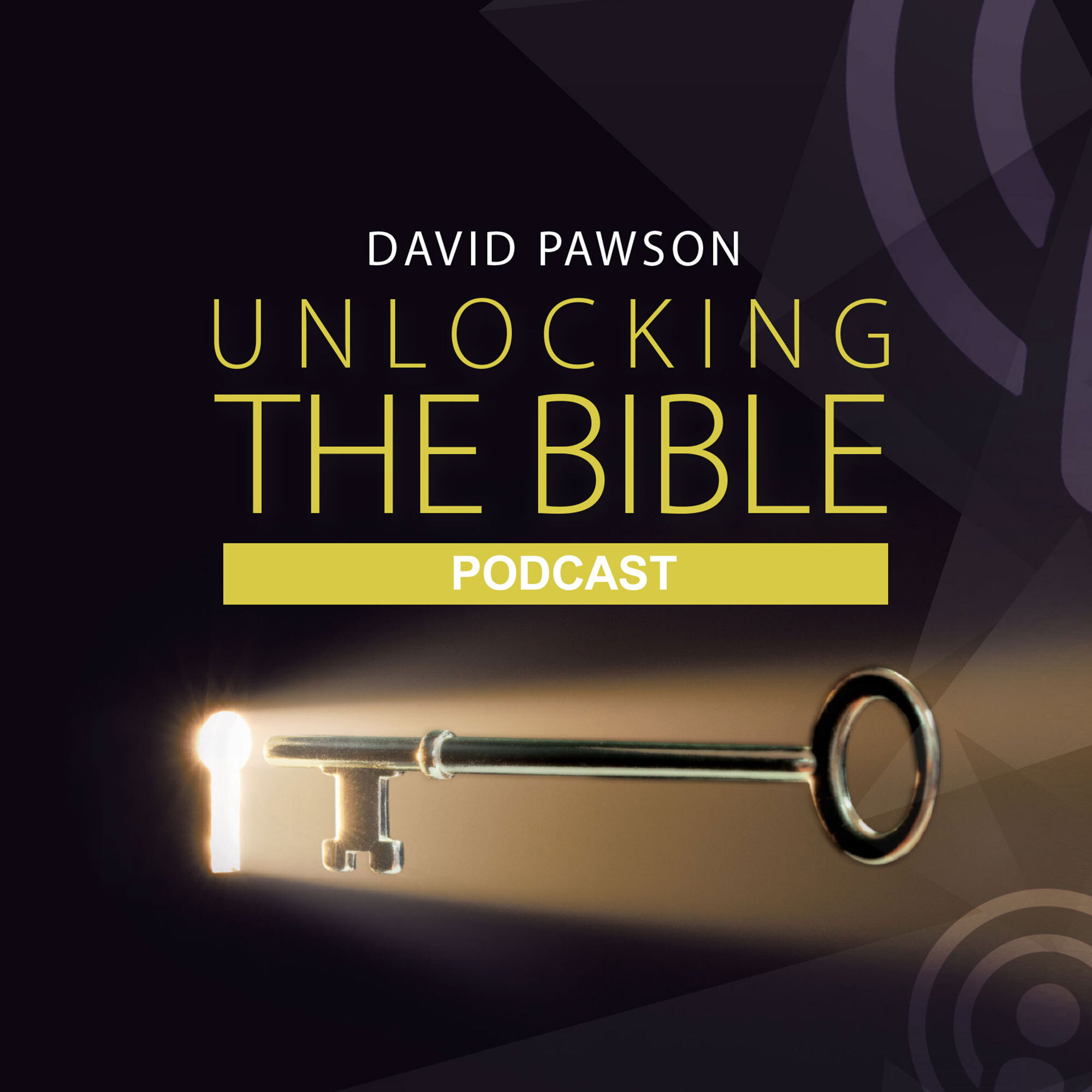 David Pawson - ’Unlocking the Bible’ PodcastGenesis - part 4 - Eden to Babylon - Unlocking The BiblePart 5 of the David Pawson 'Unlocking the Bible' Podcast series
David Pawson says, when God finished creating our world, He said that’s very good. Genesis 3 tells us what went wrong and when. Satan went for Eve as women are generally more trusting. There are 3 ways in which people misquote the word of God - by addition, by subtraction, and by alteration. Satan knows his Bible very well and did all 3 to God’s command. Satan’s strategy always uses 3 devices, to get us to doubt with our mind, desire with our heart and disobey with our will. W...2021-01-0339 min
David Pawson - ’Unlocking the Bible’ PodcastGenesis - part 4 - Eden to Babylon - Unlocking The BiblePart 5 of the David Pawson 'Unlocking the Bible' Podcast series
David Pawson says, when God finished creating our world, He said that’s very good. Genesis 3 tells us what went wrong and when. Satan went for Eve as women are generally more trusting. There are 3 ways in which people misquote the word of God - by addition, by subtraction, and by alteration. Satan knows his Bible very well and did all 3 to God’s command. Satan’s strategy always uses 3 devices, to get us to doubt with our mind, desire with our heart and disobey with our will. W...2021-01-0339 min Up Gunners! An Arsenal Podcast by Tony Doe#ARSCHE PREVIEW... [feat. @kasbornofficial x @michaelonyegide]Arsenal fans, Faithfulness and Michael weigh in on Arsenal's chances against a decent Chelsea side with 6 points between them. Will the gunners prevail or capitulate and further raise questions as to whether they can finish in the top 4 this season?
kickoff: 6.30pm WAT
Referee: Anthony Taylor
Assistants: Gary Beswick, Adam Nunn
Fourth official: Craig Pawson 2019-01-1804 min
Up Gunners! An Arsenal Podcast by Tony Doe#ARSCHE PREVIEW... [feat. @kasbornofficial x @michaelonyegide]Arsenal fans, Faithfulness and Michael weigh in on Arsenal's chances against a decent Chelsea side with 6 points between them. Will the gunners prevail or capitulate and further raise questions as to whether they can finish in the top 4 this season?
kickoff: 6.30pm WAT
Referee: Anthony Taylor
Assistants: Gary Beswick, Adam Nunn
Fourth official: Craig Pawson 2019-01-1804 min UPGNRS Podcast#ARSCHE PREVIEW... [feat. @kasbornofficial x @michaelonyegide]Arsenal fans, Faithfulness and Michael weigh in on Arsenal's chances against a decent Chelsea side with 6 points between them. Will the gunners prevail or capitulate and further raise questions as to whether they can finish in the top 4 this season?
kickoff: 6.30pm WAT
Referee: Anthony Taylor
Assistants: Gary Beswick, Adam Nunn
Fourth official: Craig Pawson 2019-01-1804 min
UPGNRS Podcast#ARSCHE PREVIEW... [feat. @kasbornofficial x @michaelonyegide]Arsenal fans, Faithfulness and Michael weigh in on Arsenal's chances against a decent Chelsea side with 6 points between them. Will the gunners prevail or capitulate and further raise questions as to whether they can finish in the top 4 this season?
kickoff: 6.30pm WAT
Referee: Anthony Taylor
Assistants: Gary Beswick, Adam Nunn
Fourth official: Craig Pawson 2019-01-1804 min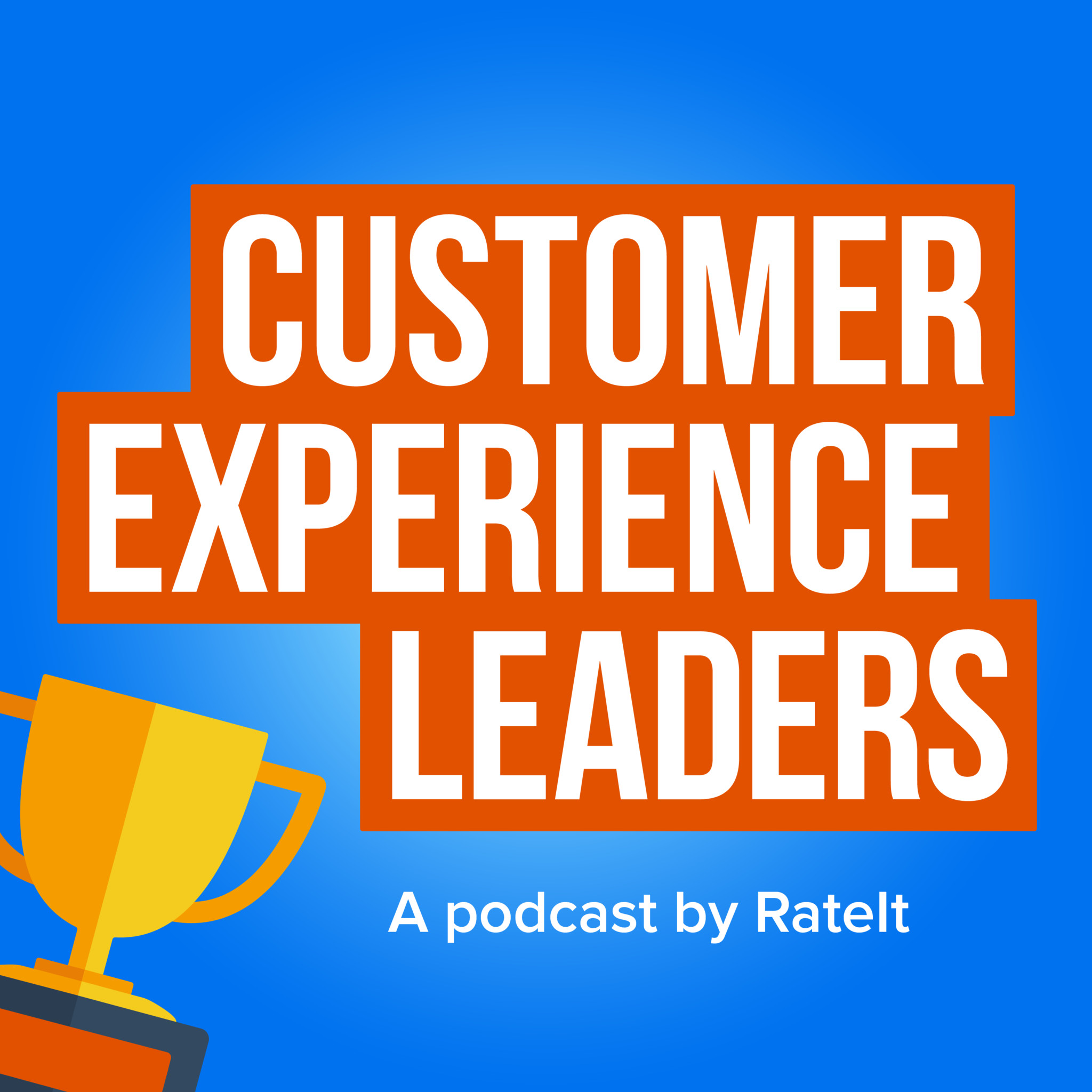 Customer Experience LeadersService blueprints: the document to end all CX nightmares! | NBN Co, Senior CX Design Lead, Janine PawsonJanine Pawson is a Senior CX Design Lead at Australia’s NBN Co. She’s an expert at creating service blueprints to help companies understand the interactions they have with their customers. In this episode you’ll learn about the importance of a service blueprint, how it fits into the arsenal of a great CX pro, and how to actually create one for your business. Resources mentioned: Mapping Experiences (book), by James Kalbach Realtime Board (example) Learning Space Toolkit (example) Service Blueprint (Wikipedia) Nielsen Norman Group (definition) Key takeaways (starts at 26:43): Lear...2018-06-2533 min
Customer Experience LeadersService blueprints: the document to end all CX nightmares! | NBN Co, Senior CX Design Lead, Janine PawsonJanine Pawson is a Senior CX Design Lead at Australia’s NBN Co. She’s an expert at creating service blueprints to help companies understand the interactions they have with their customers. In this episode you’ll learn about the importance of a service blueprint, how it fits into the arsenal of a great CX pro, and how to actually create one for your business. Resources mentioned: Mapping Experiences (book), by James Kalbach Realtime Board (example) Learning Space Toolkit (example) Service Blueprint (Wikipedia) Nielsen Norman Group (definition) Key takeaways (starts at 26:43): Lear...2018-06-2533 min